Although we were absolutely smitten with England and Wales, we were also eager to visit Scotland! Here is our Scotland itinerary:
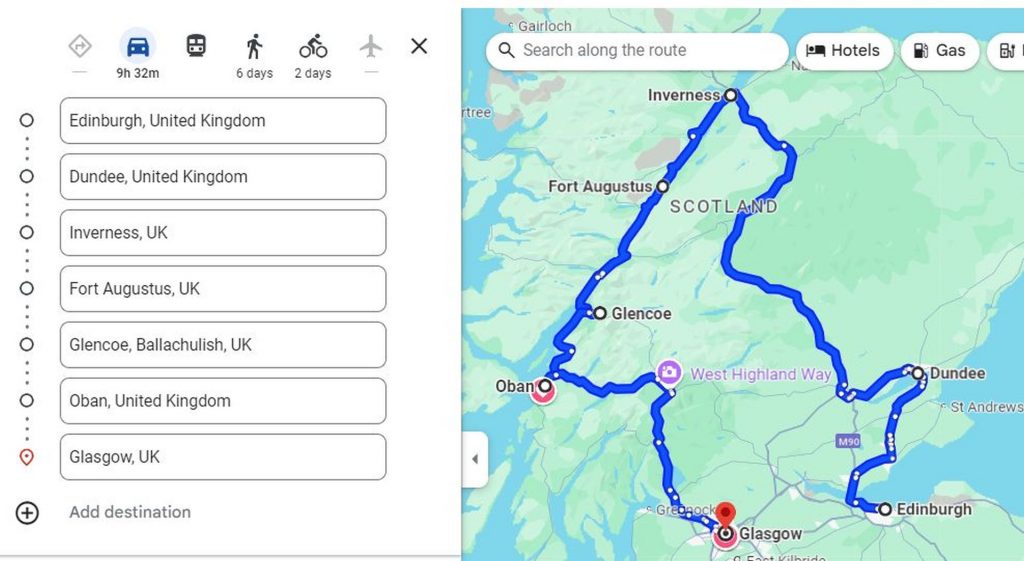
We had tentatively planned to spend two nights in Edinburgh, but extended it to three. We spent our first day in Edinburgh in a pub. Okay, that sounds worse than it is. We didn’t arrive until the afternoon (it is four hours from York), so it wasn’t actually a full day in the pub. Anyway, we found this cute little pub near our hotel and decided to have a beer. One beer led to another, which then led to our eating dinner there. The bartender and clientele were so very friendly, we simply didn’t want to leave. So we didn’t!
We did get out and about on the second day, however. We visited The Royal Yacht Britannia, Princes Street Gardens and the Ross Fountain, the Palace of Holyroodhouse, and Tolbooth Tavern (the last for food).
We hadn’t even known about The Royal Yacht Britannia, but the bartender from the pub recommended it, so we decided to go. It was our first stop of the day.
A Royal residence for 44 years, The Royal Yacht Britannia sailed over 1,000,000 nautical miles on 968 state visits with the Royal Family where they entertained prime ministers and presidents. She has been berthed permanently at the Port of Leith in Edinburgh since 1998 and is now a five-star visitor attraction, welcoming over 390,000 visitors a year from all over the world.
Picture time!
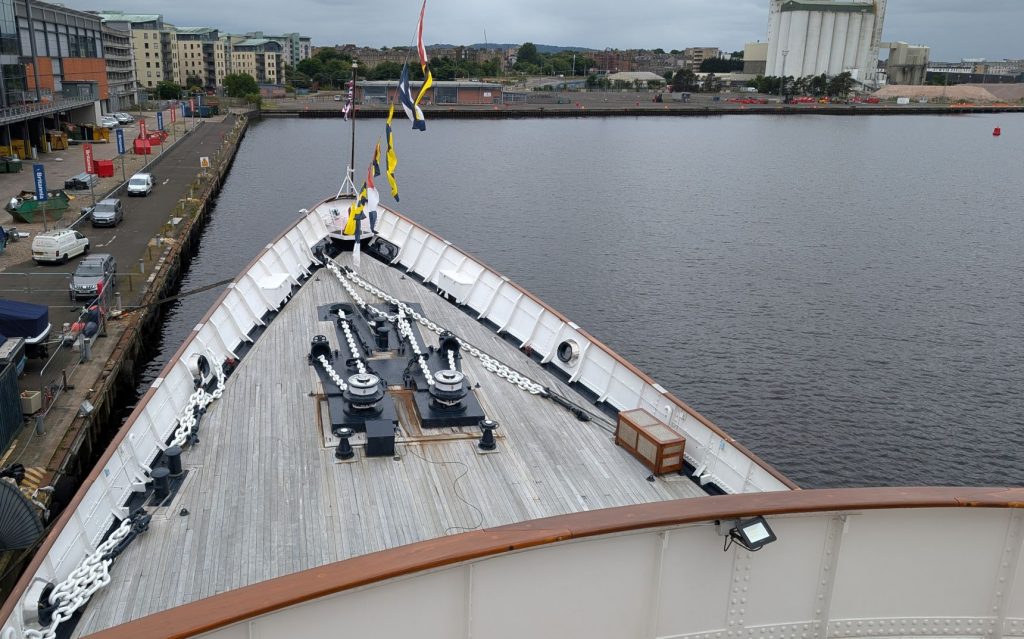
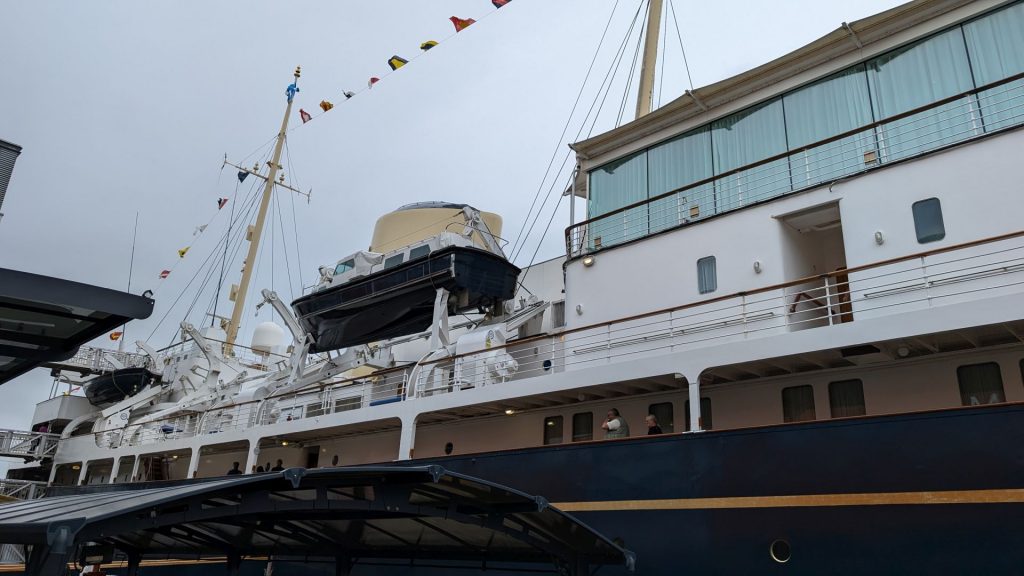
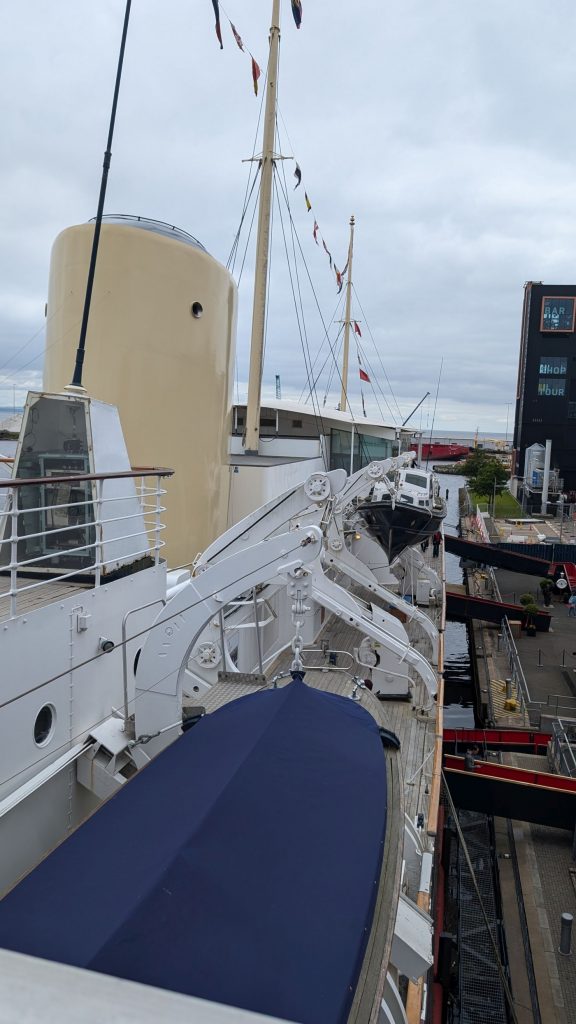
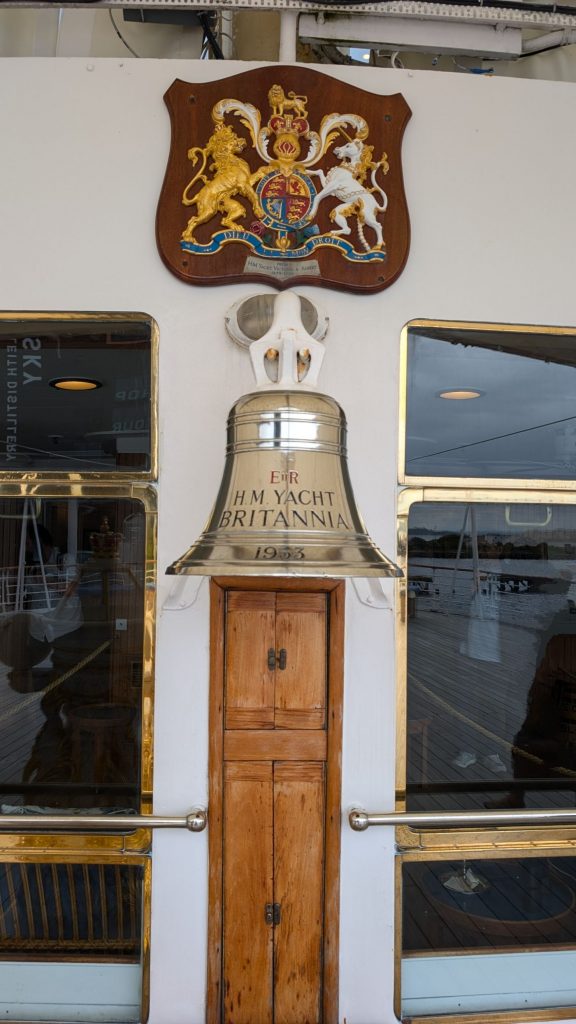
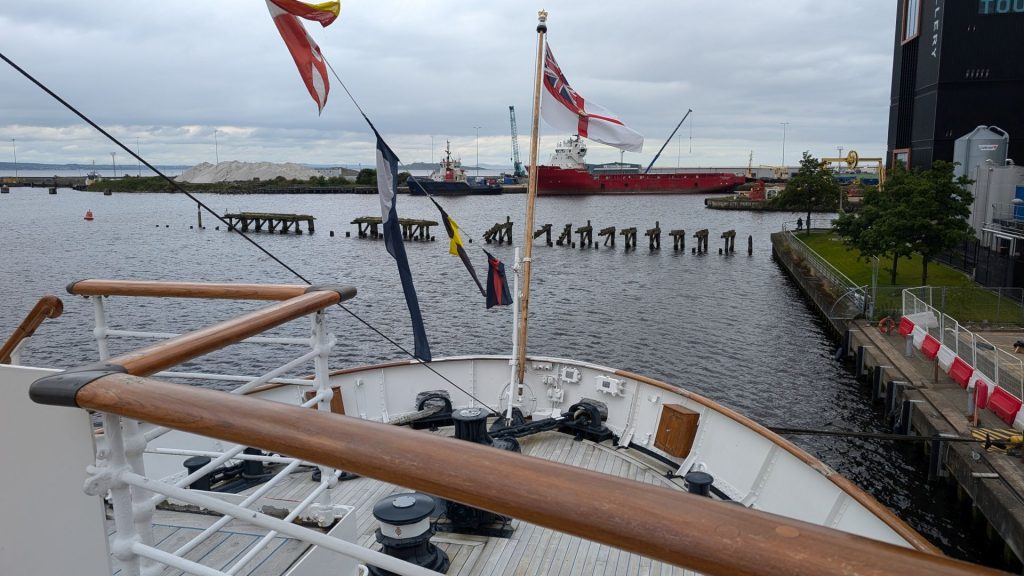
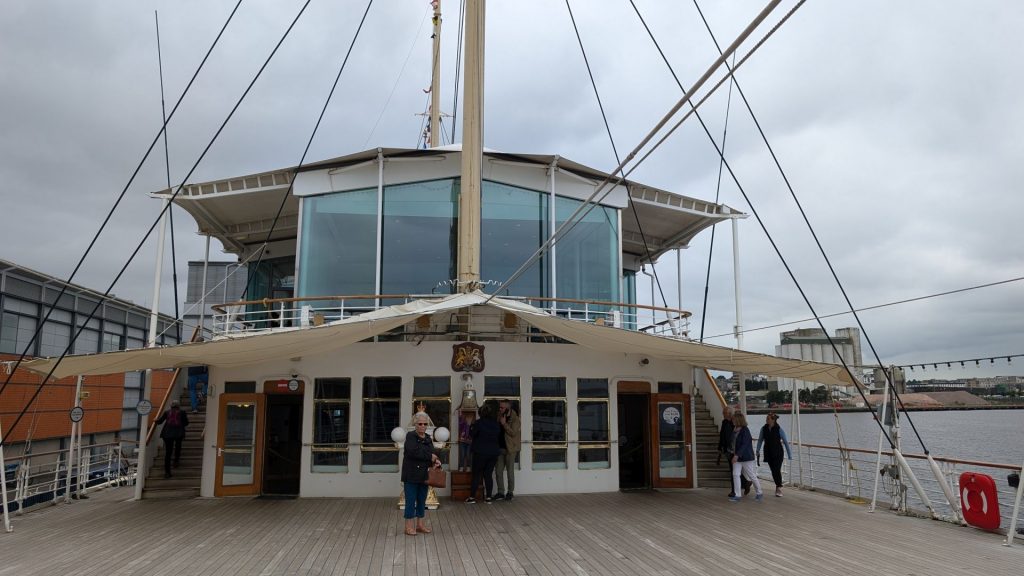
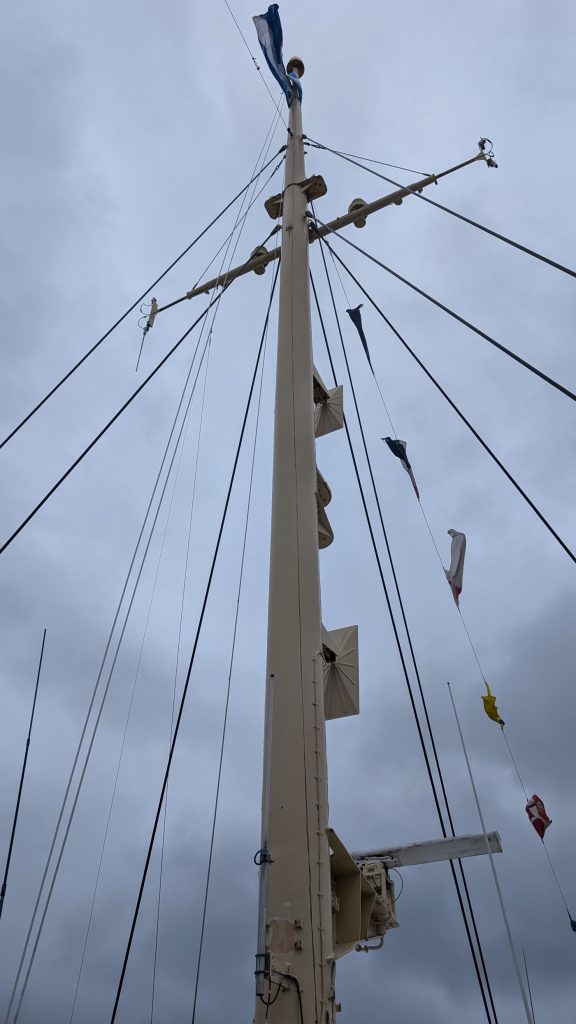
It was noted that the windows to the Royal Family’s living quarters (below, right) were placed higher than the “regular” portholes so that folks walking by couldn’t see into the rooms.
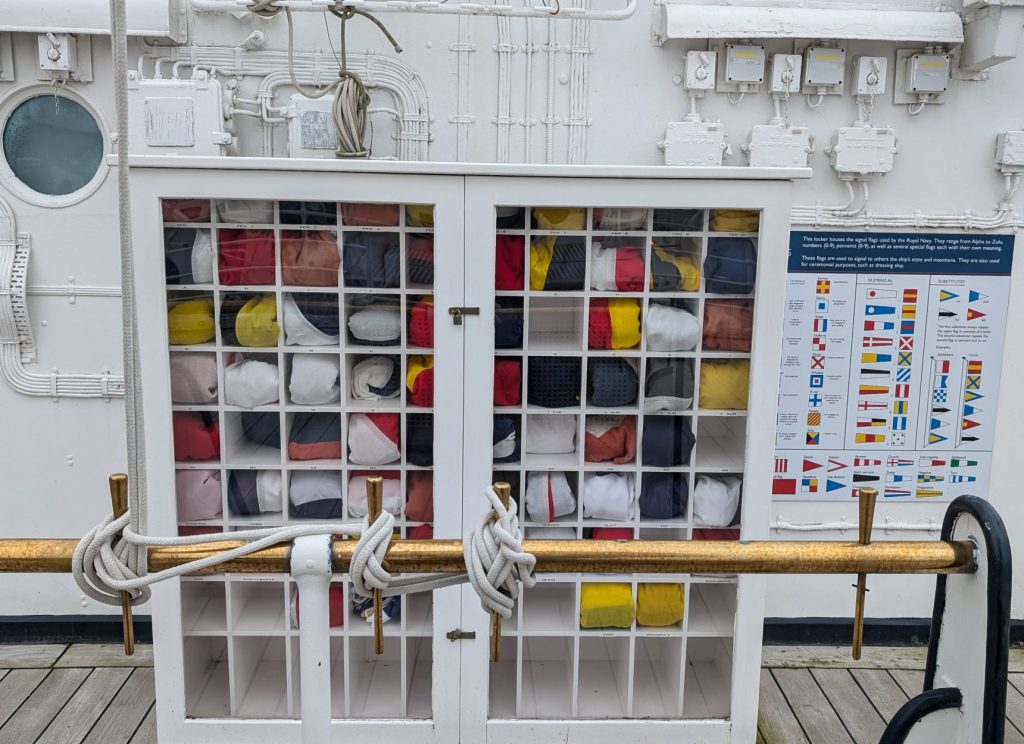
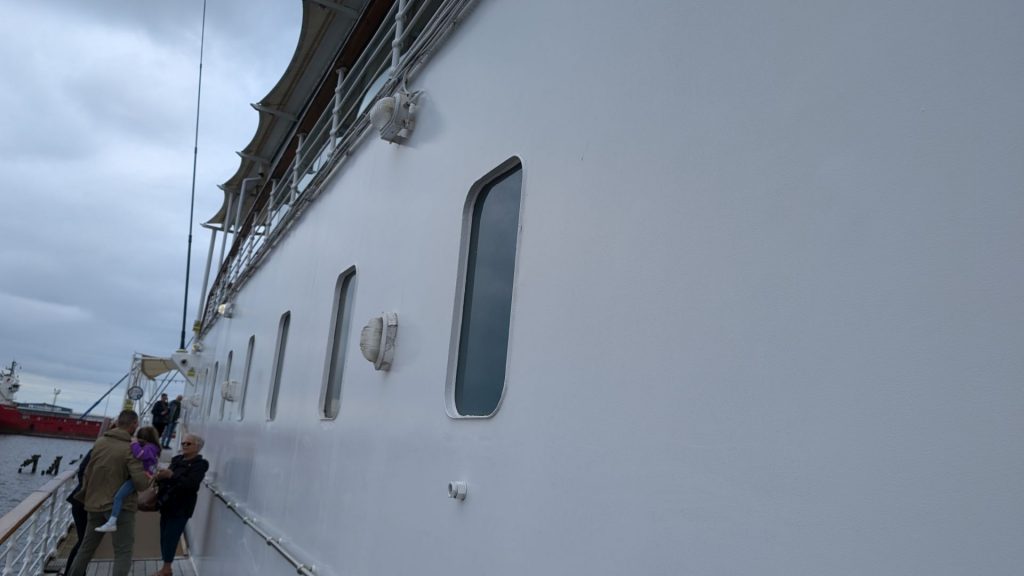
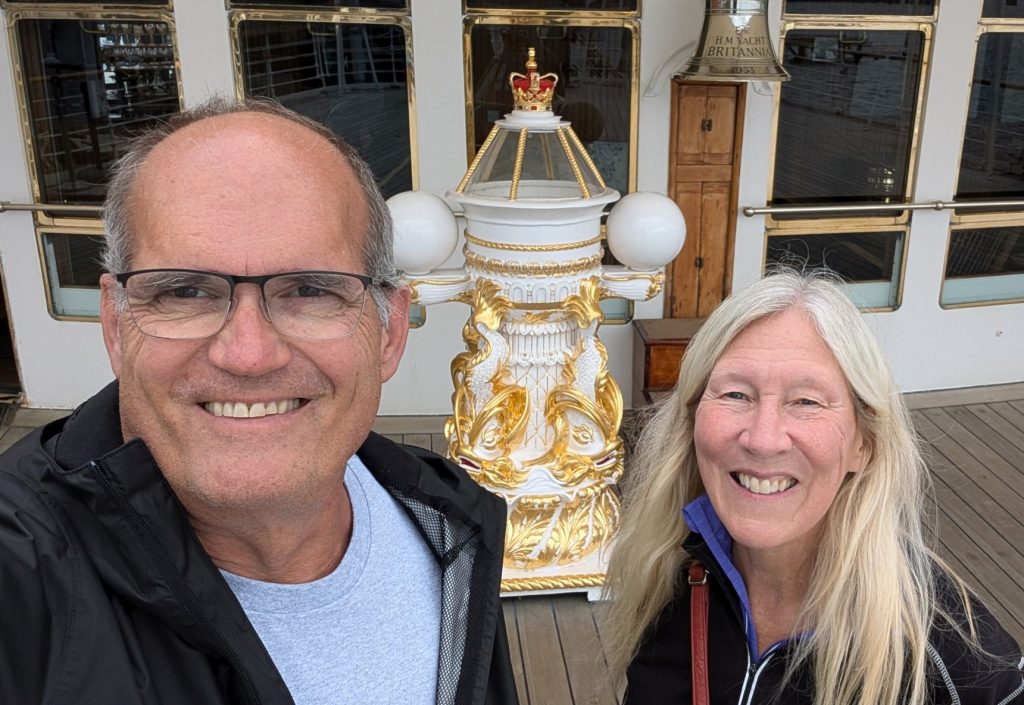
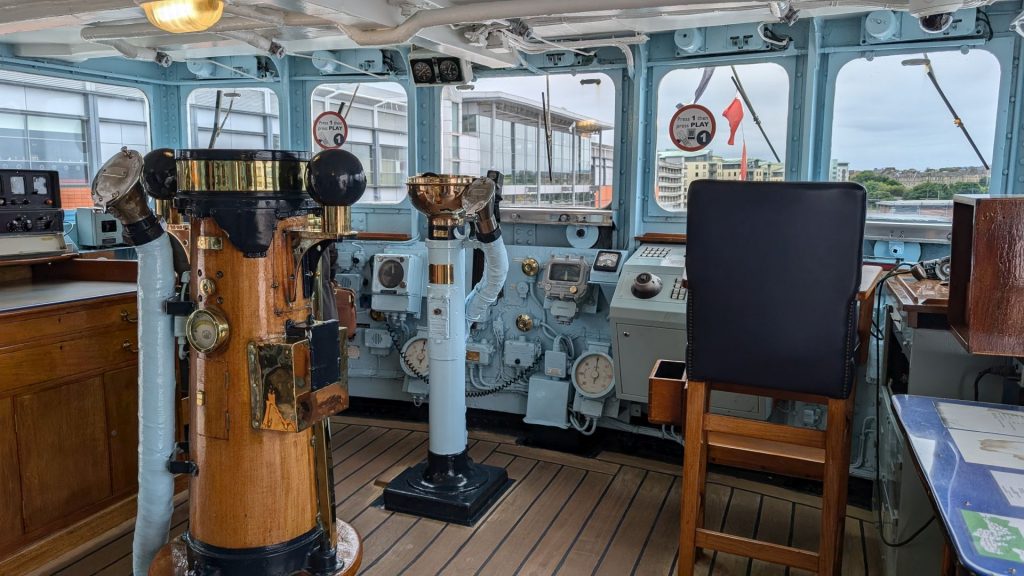
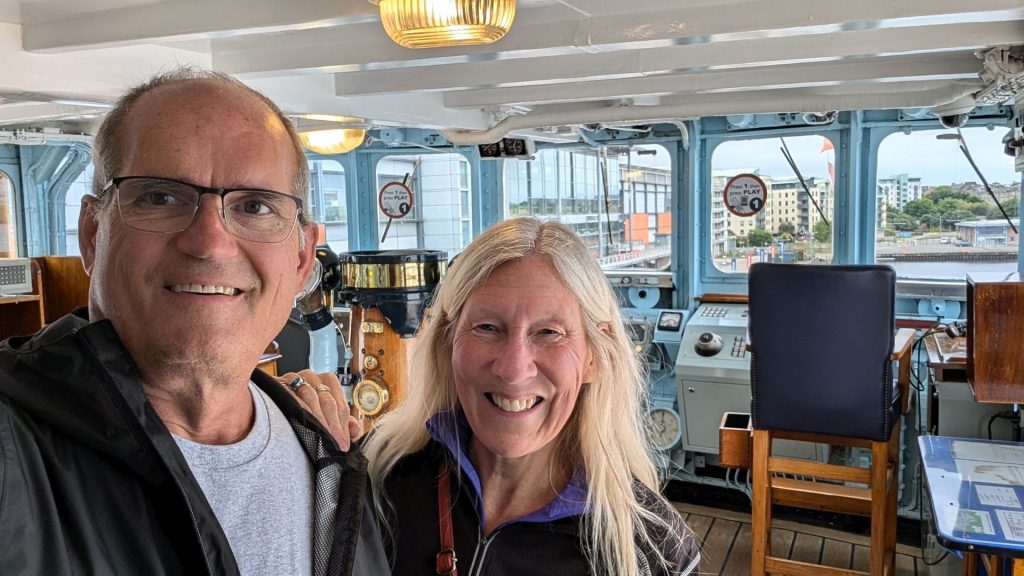
As you view the pictures, look for the Corgis! 🙂
I admit to not remembering which rooms are for which groups of people or crew, or the purpose of each space, so I will probably just post pictures (unless I am somewhat sure of myself).
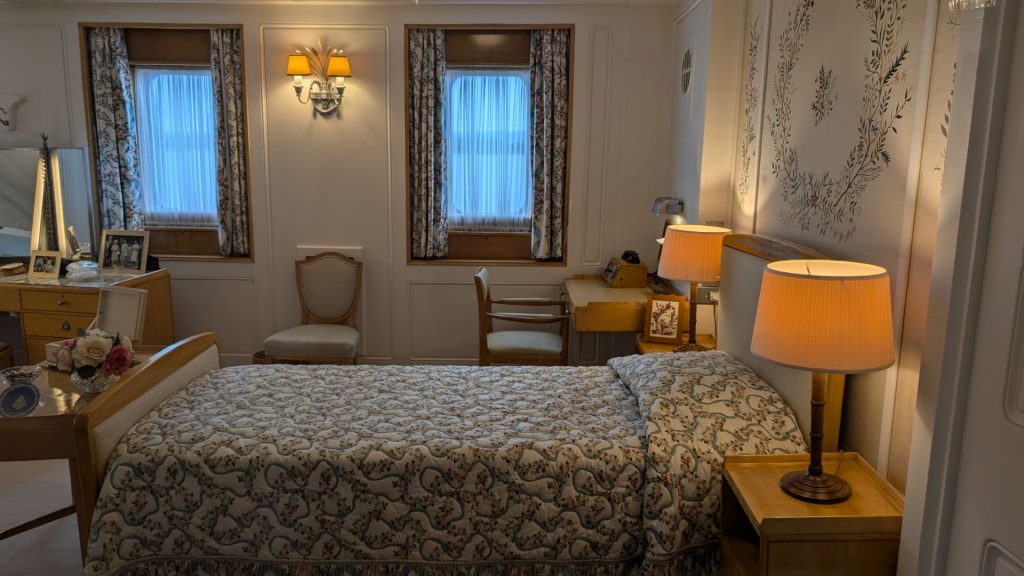
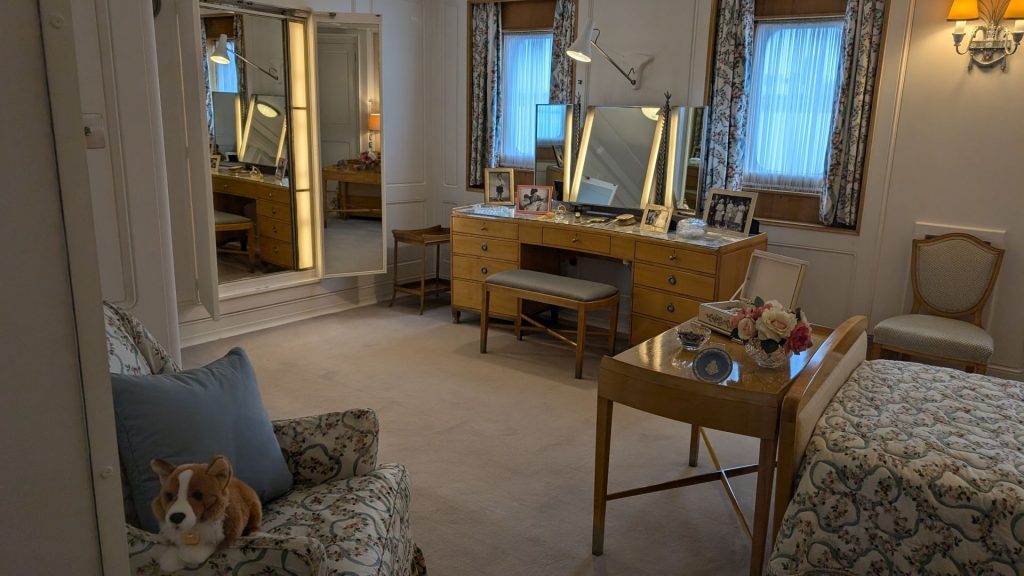
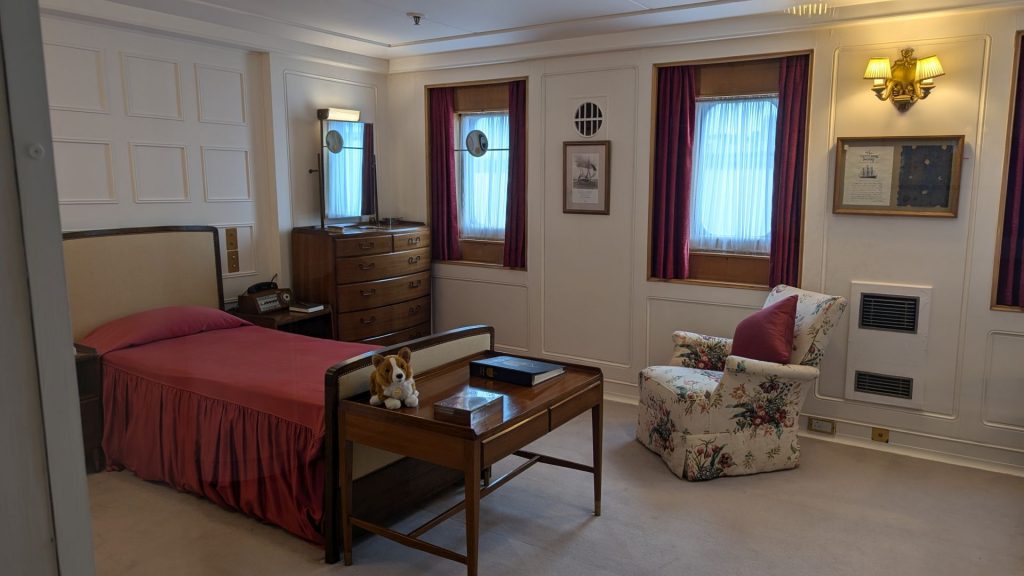
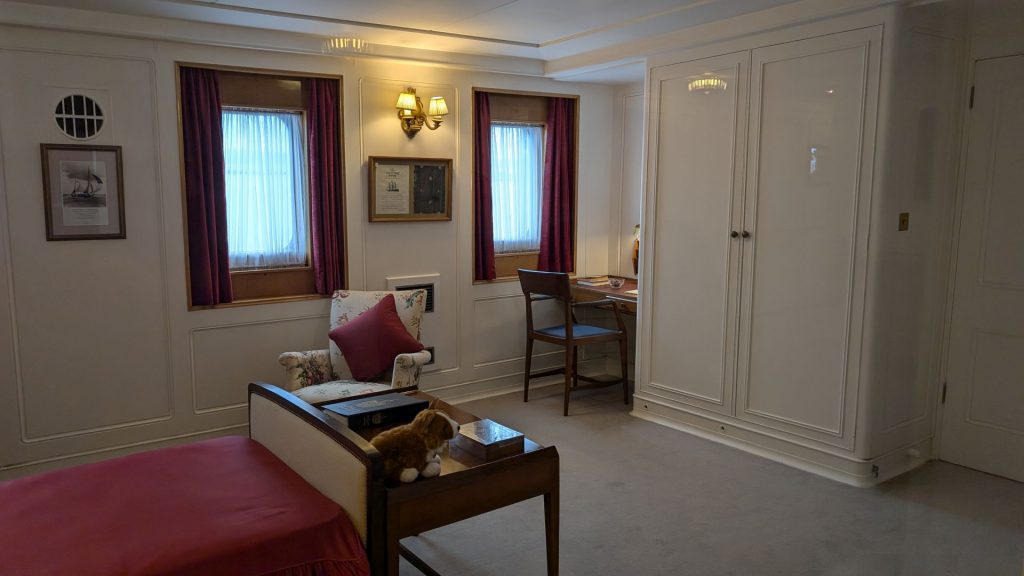
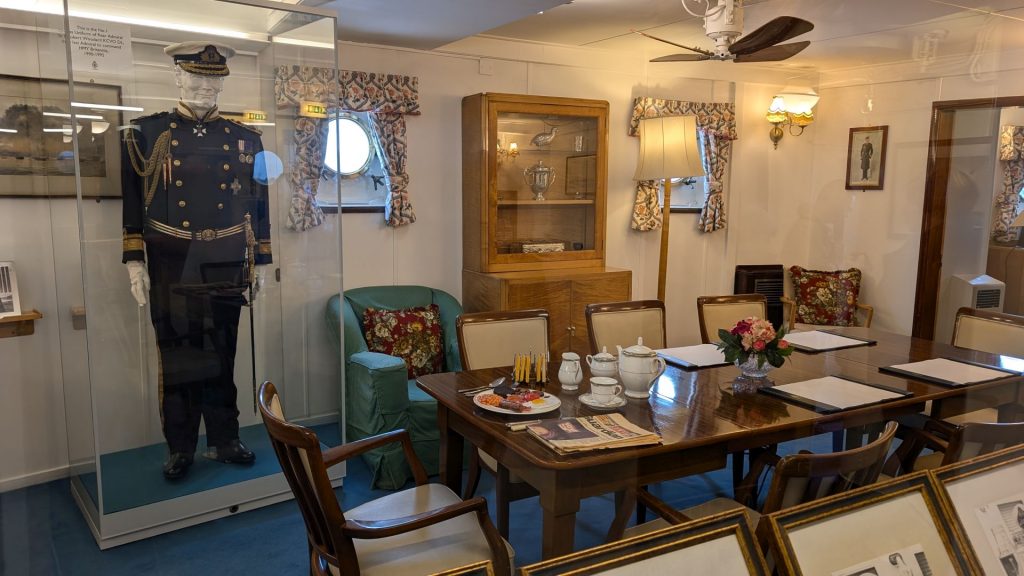
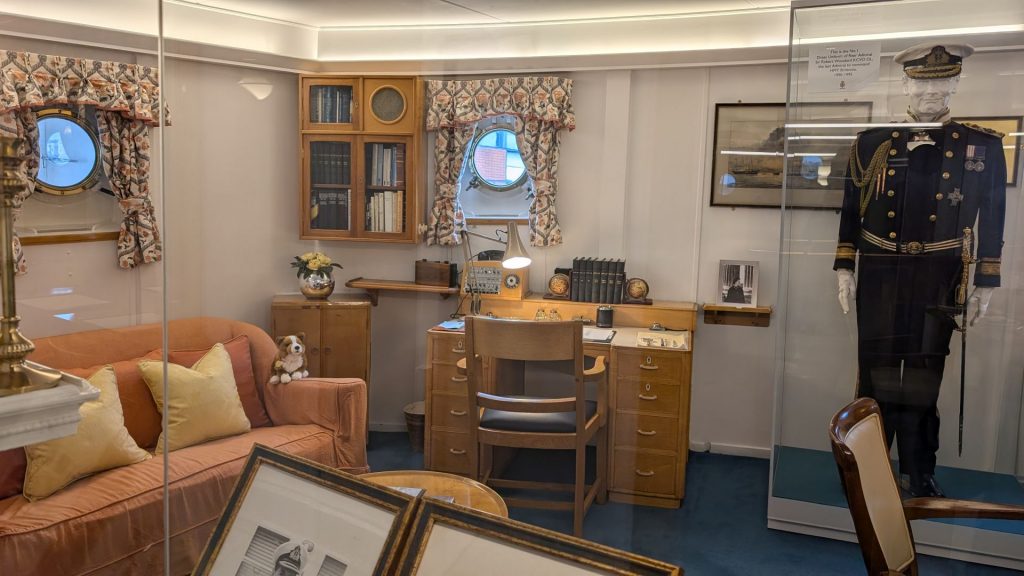
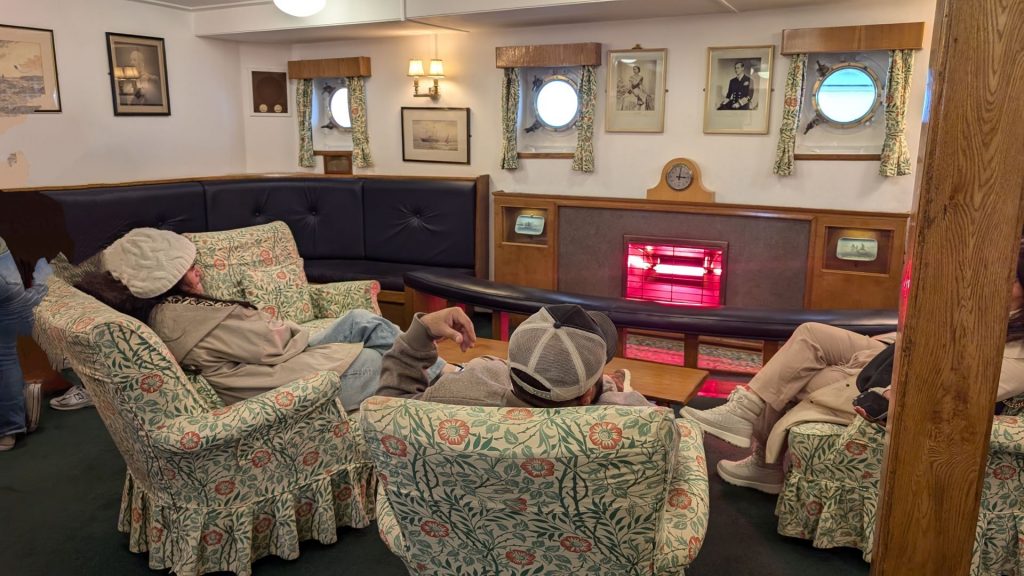
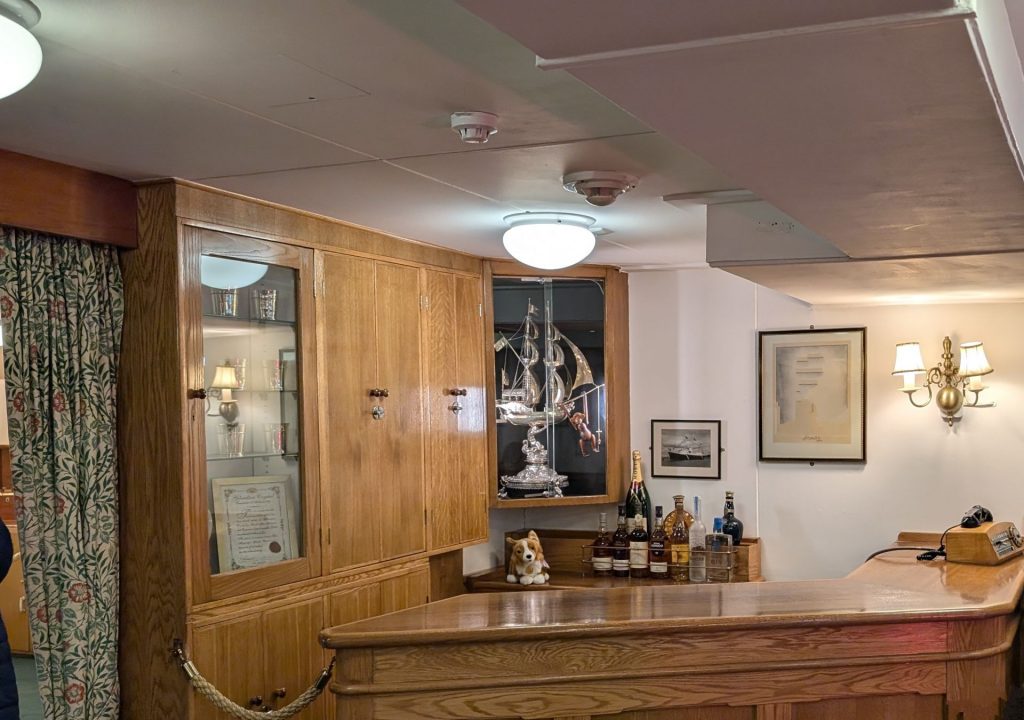
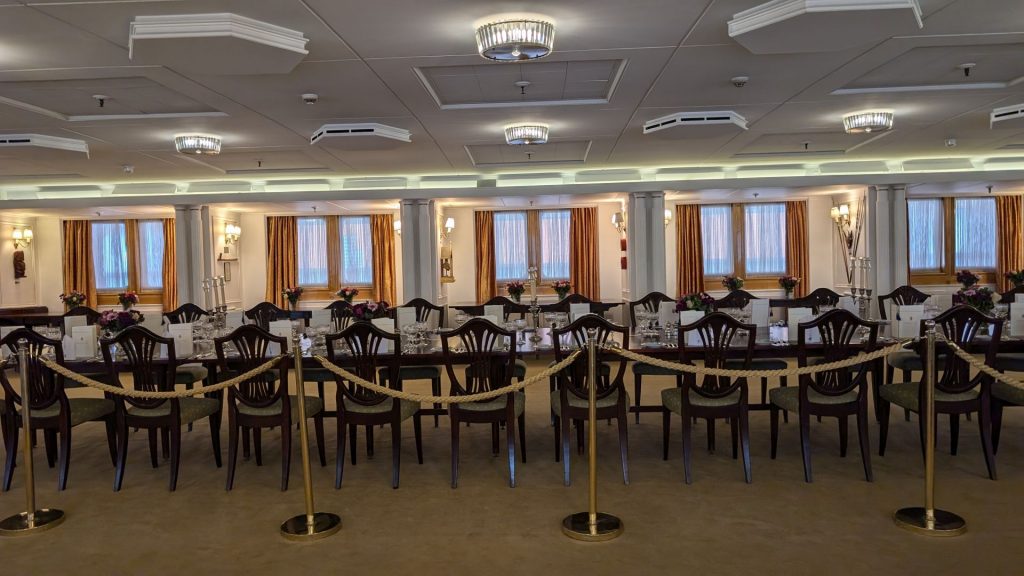
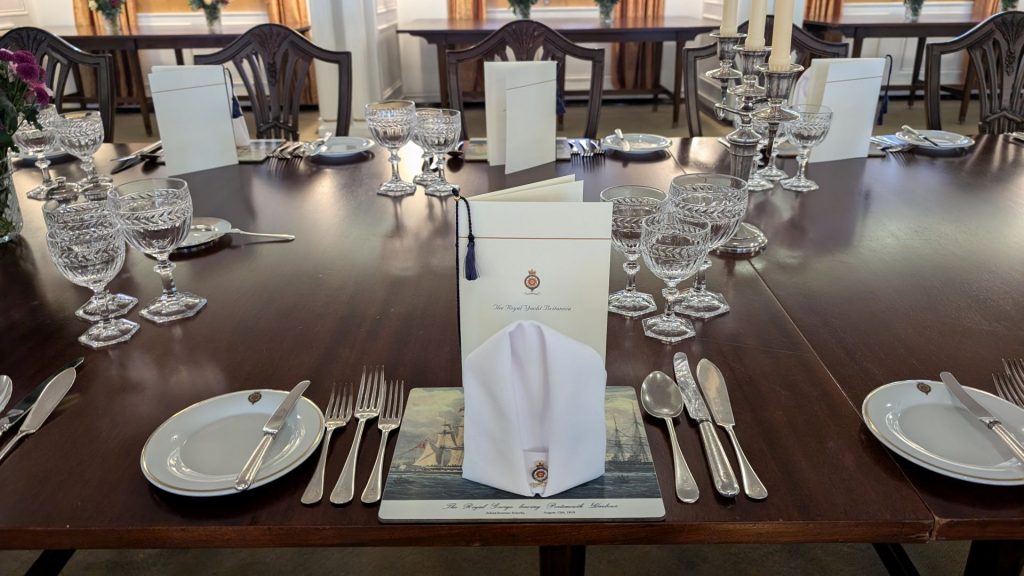
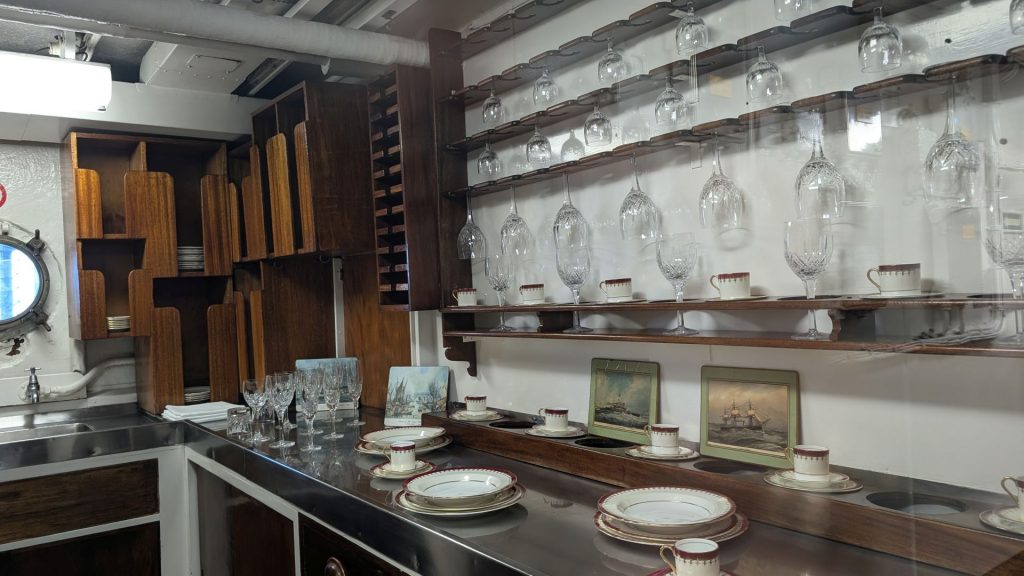
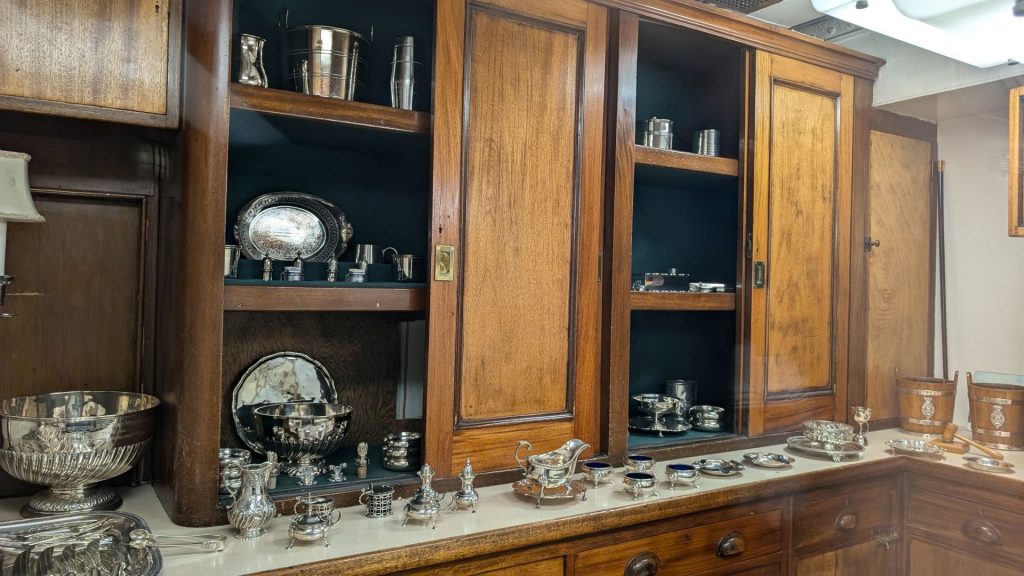
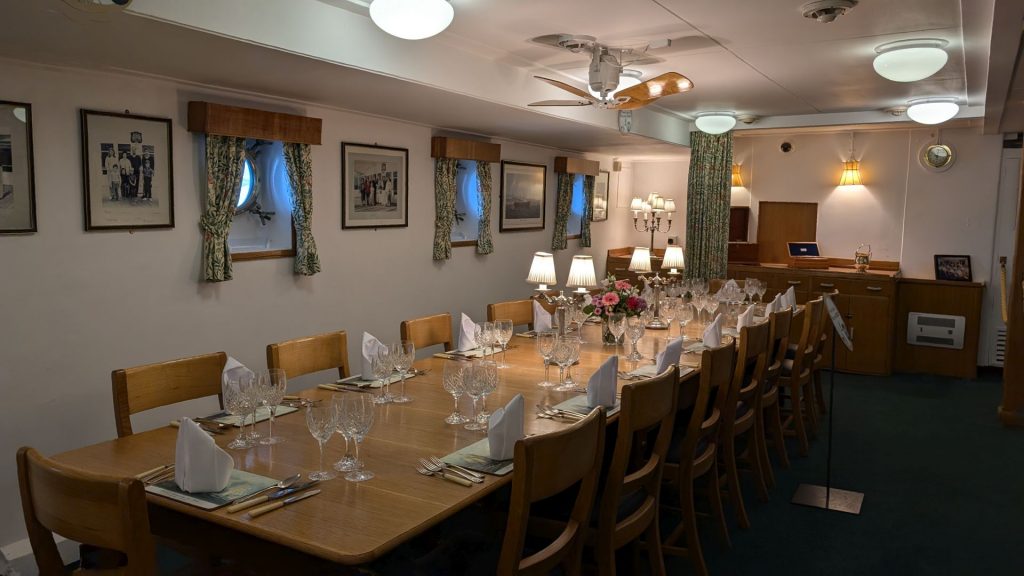
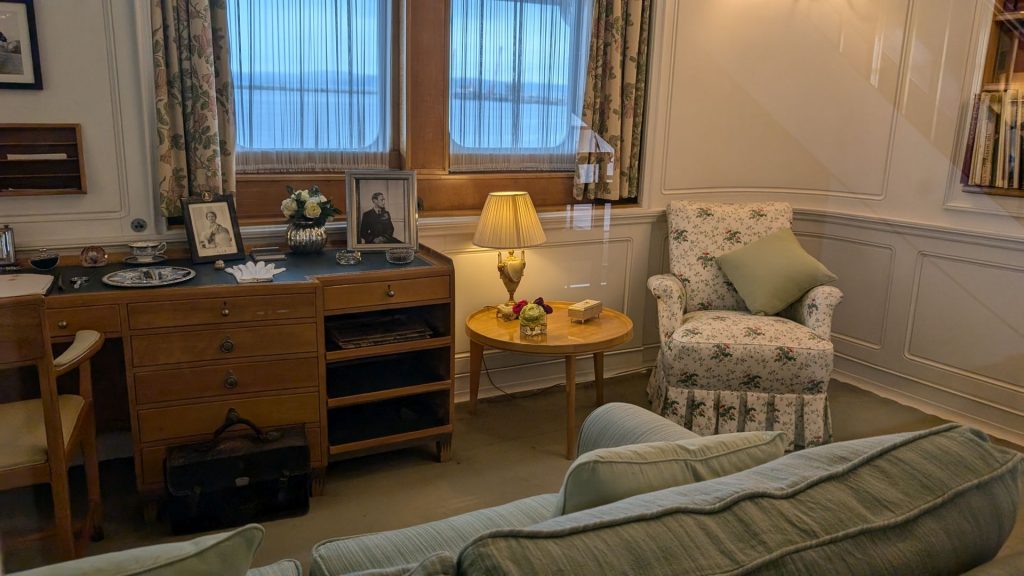
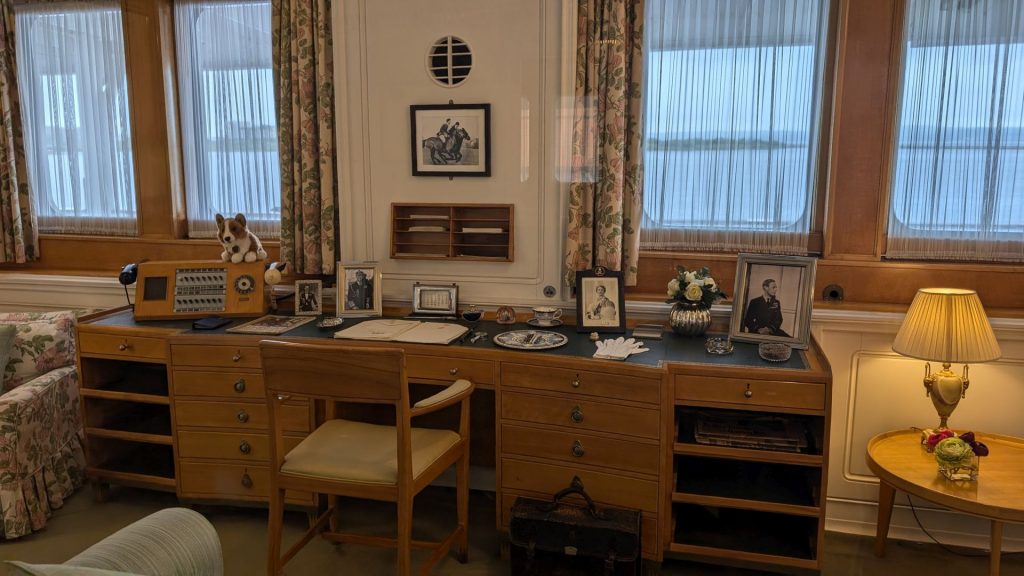
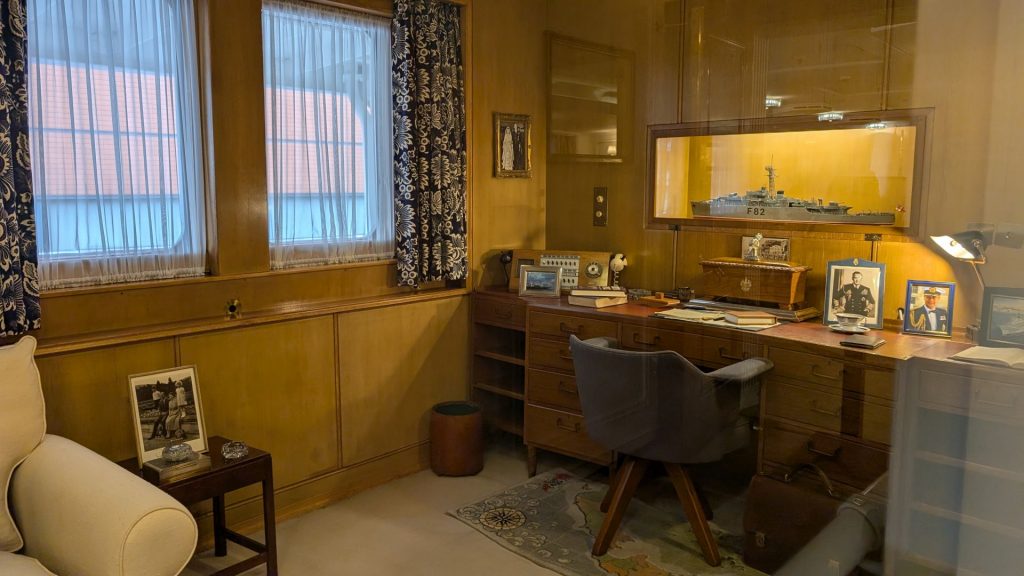
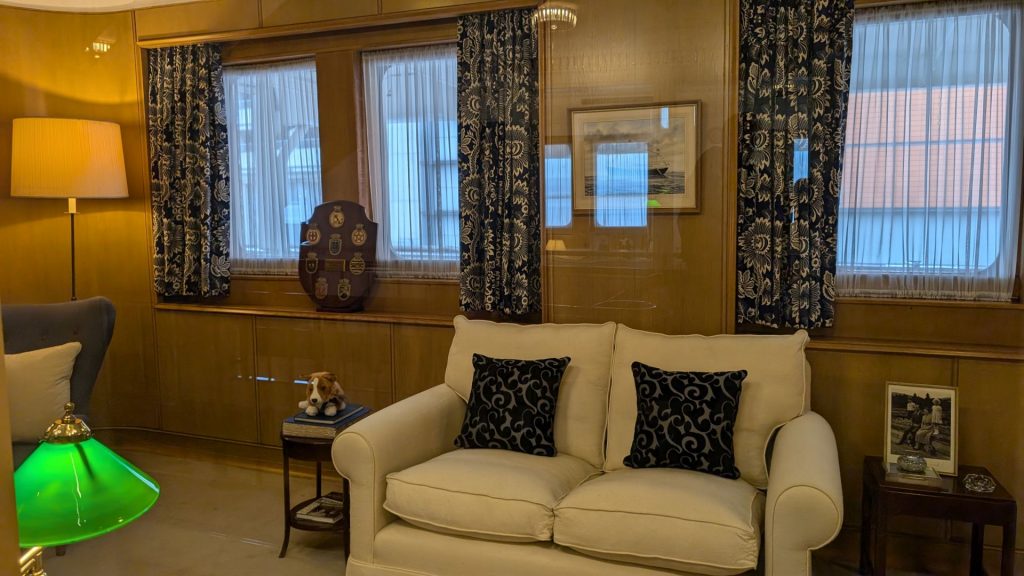
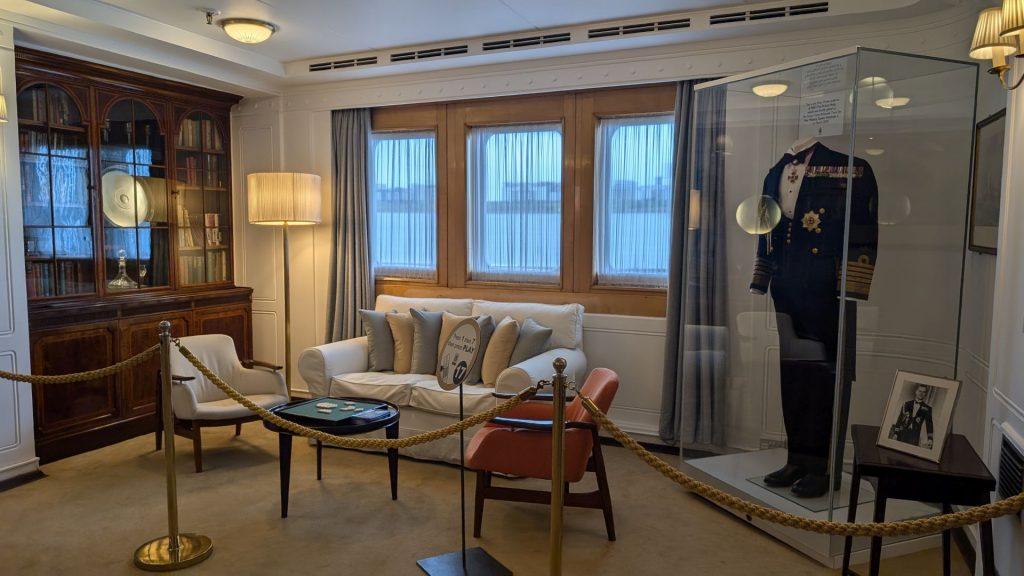
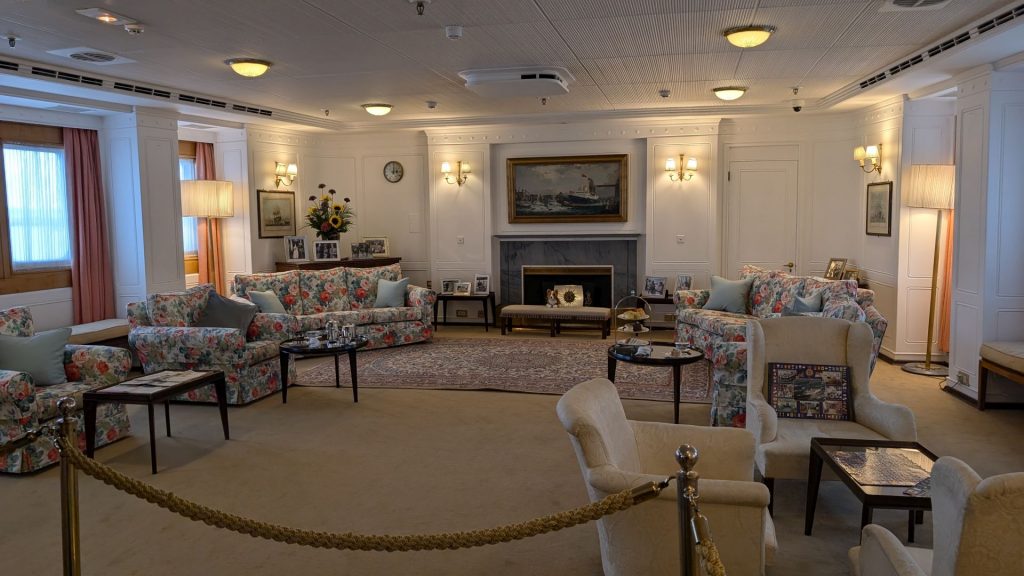
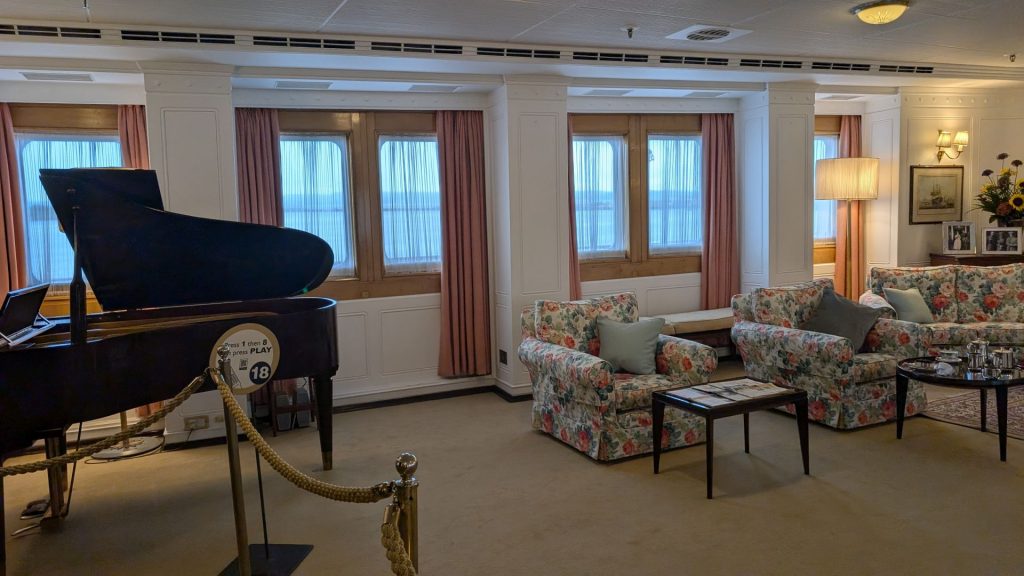
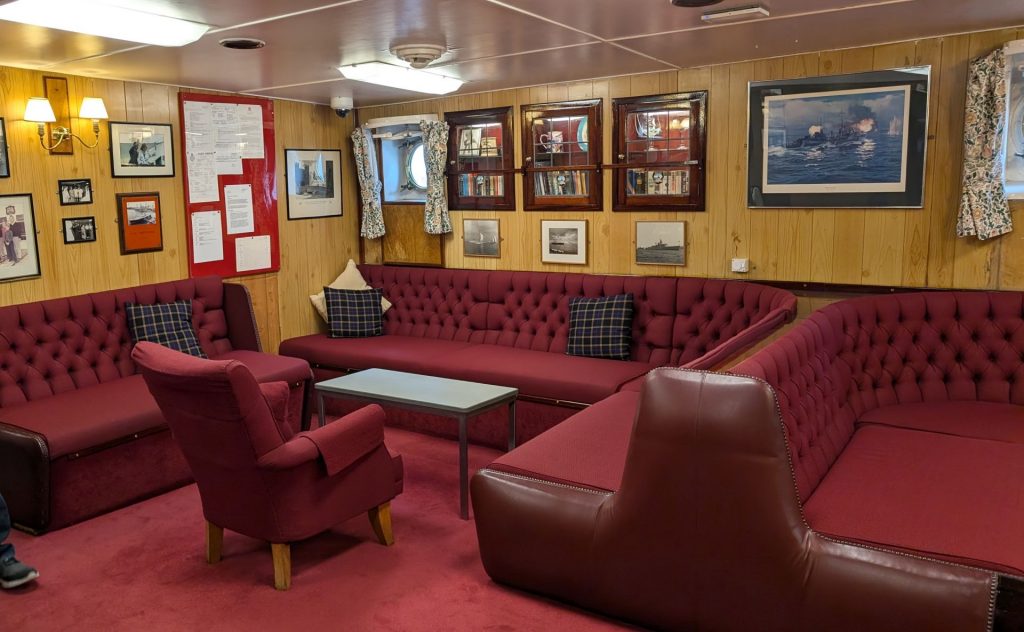
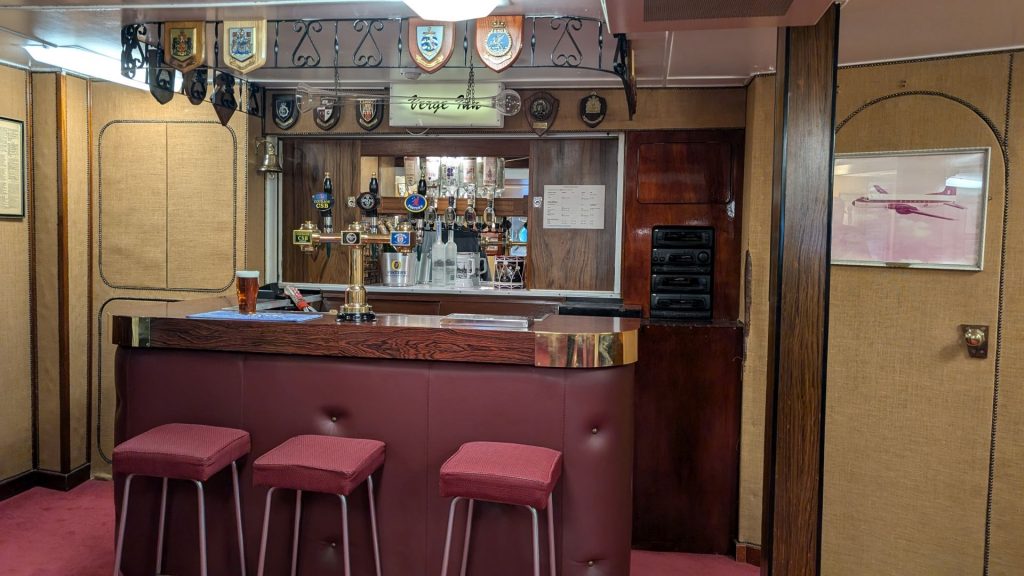
There were always military personnel on the ship. Their lodgings:
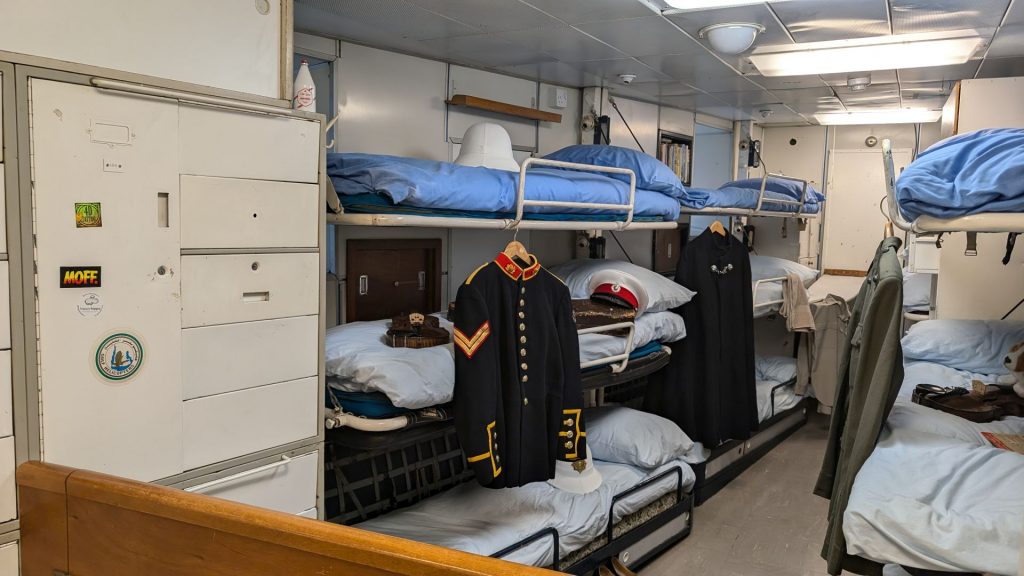
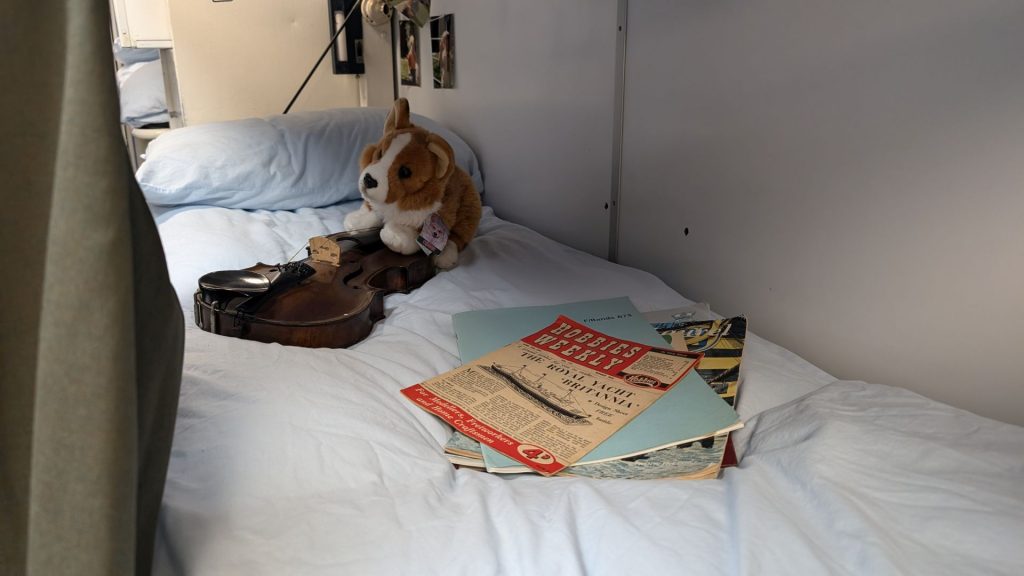
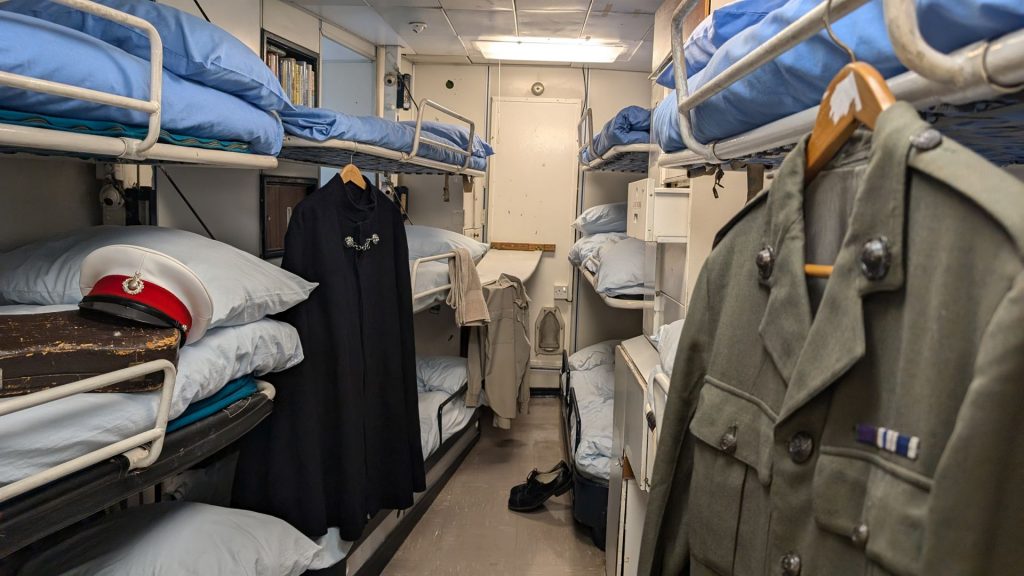
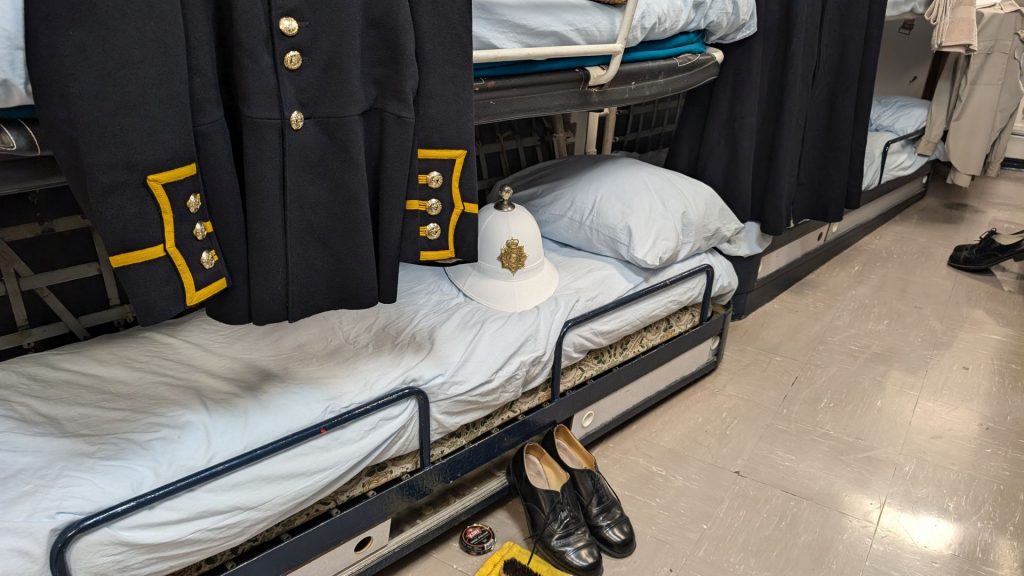
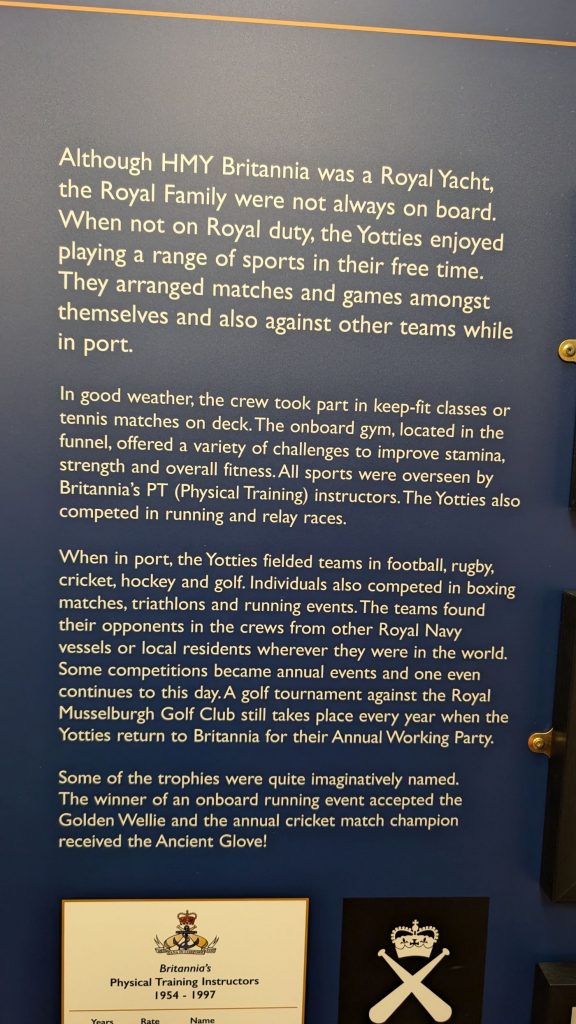
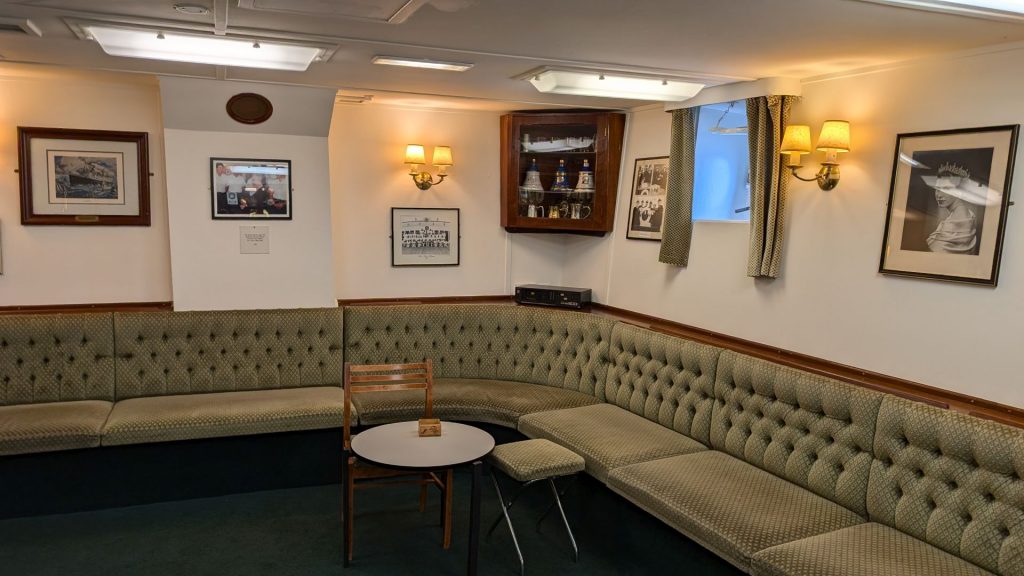
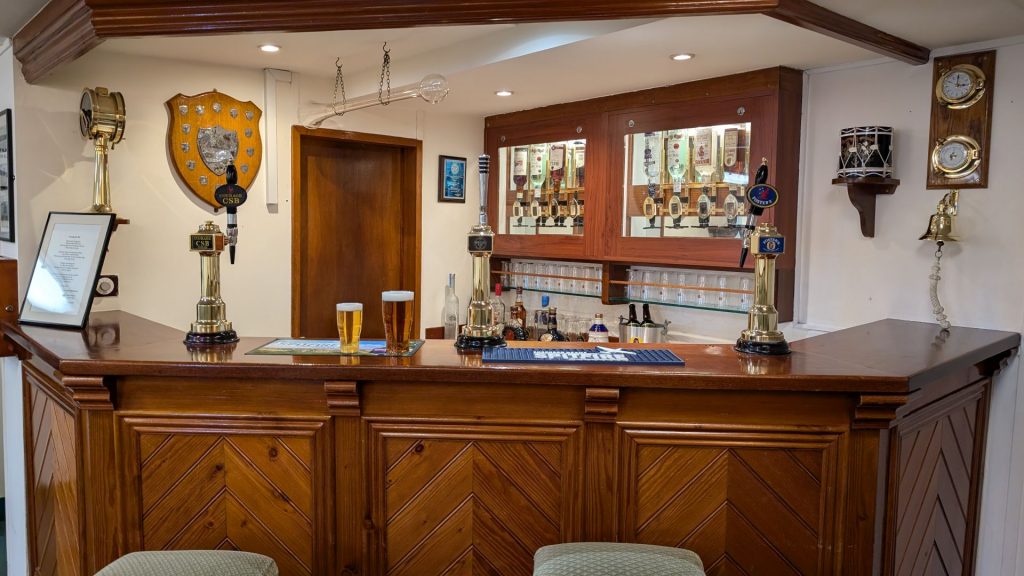
The following sign describes the picture beneath it:
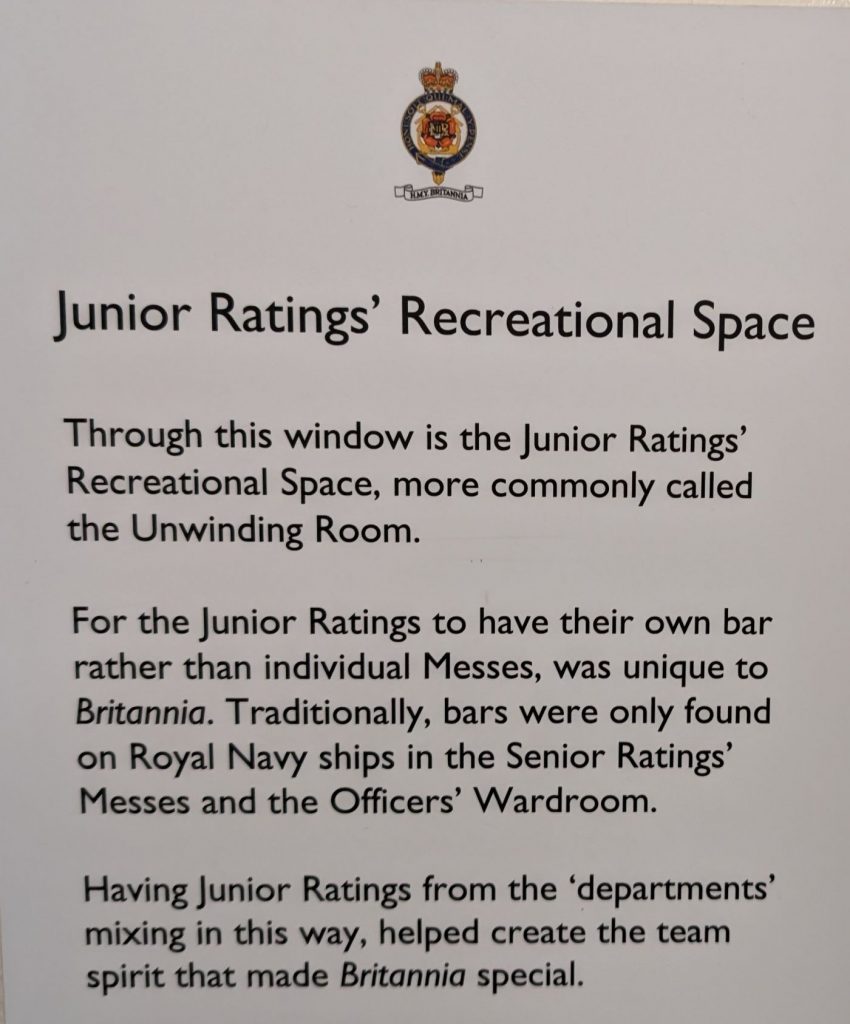
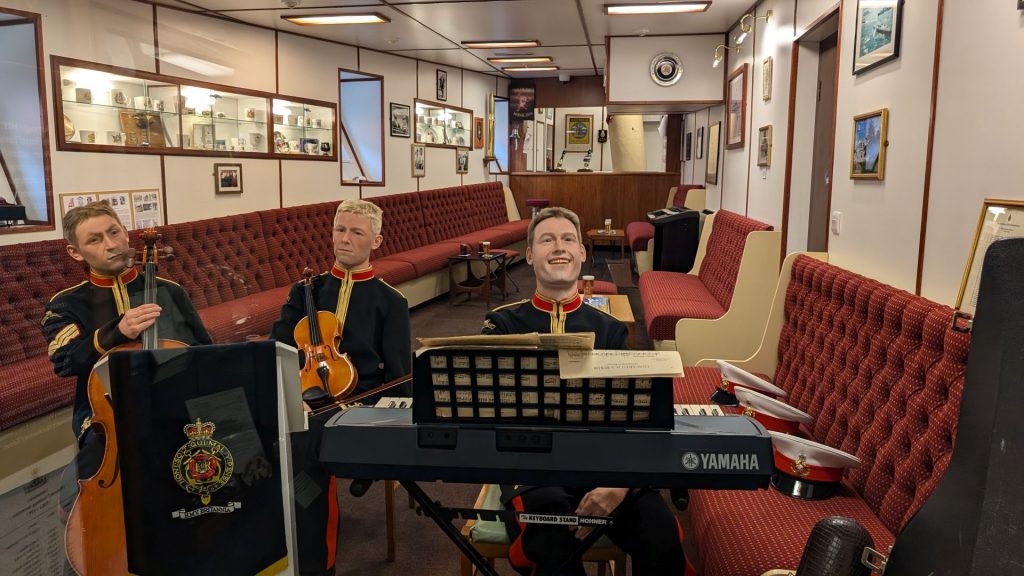
More crew lodgings:
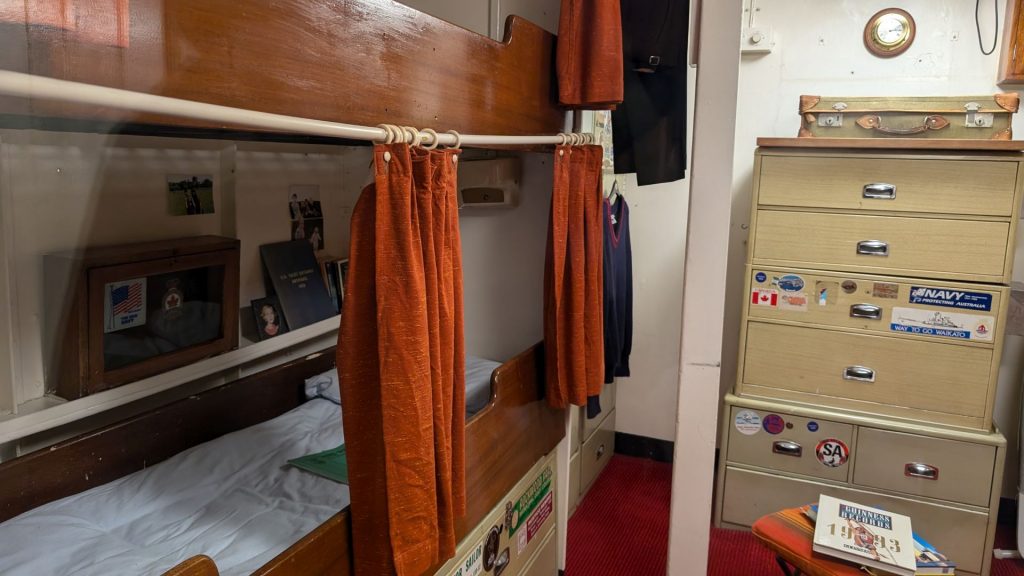
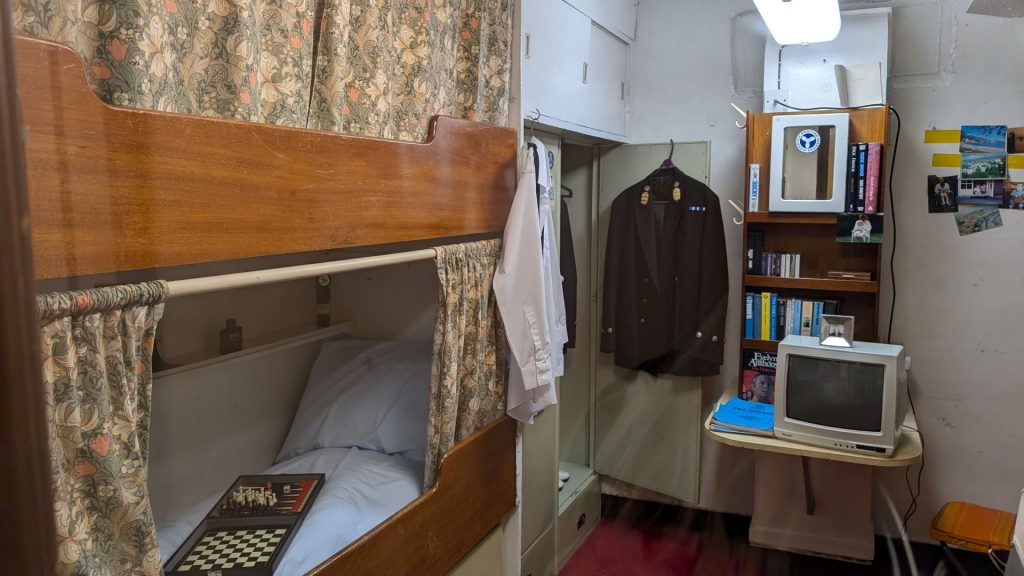
The crew included a doctor.
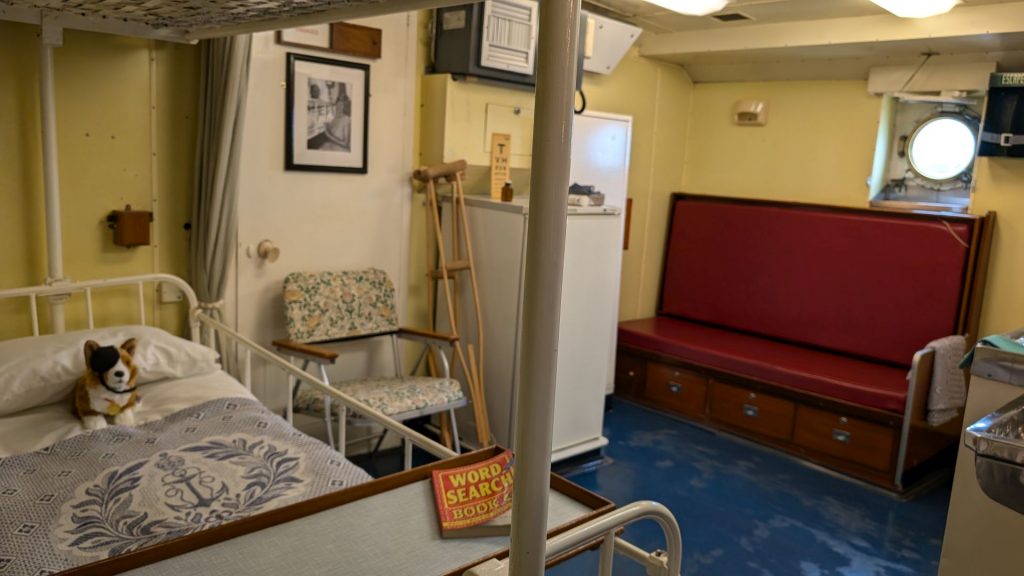
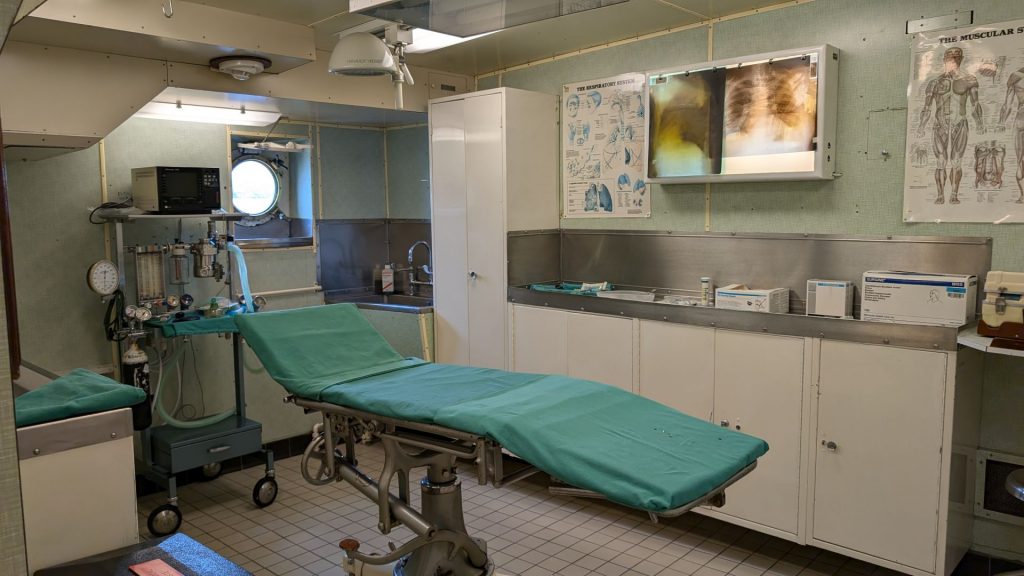
A ton of laundry needed to be done on the ship. This hadn’t even occurred to me, but when we saw the size of the laundry room, we got it!!
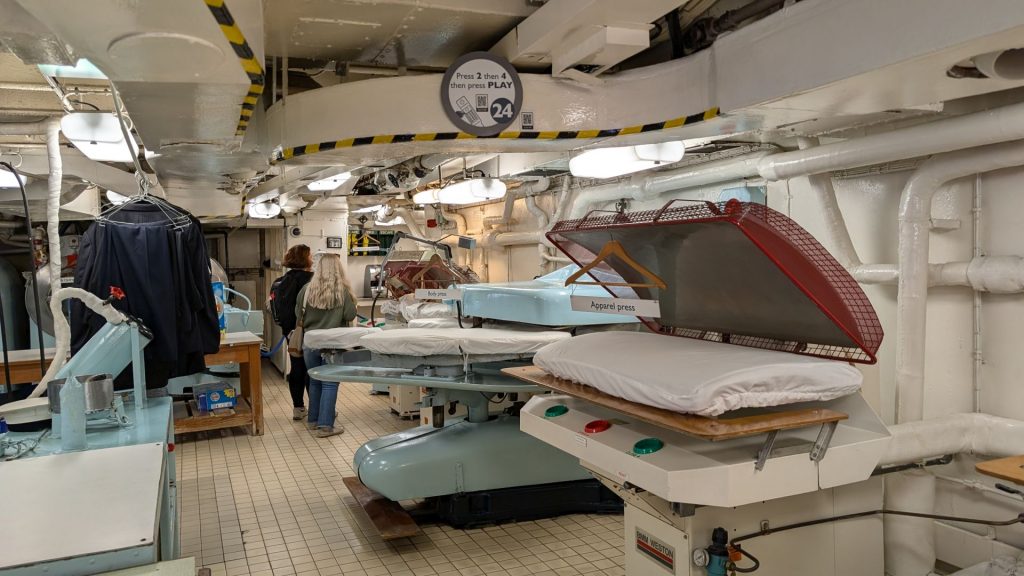
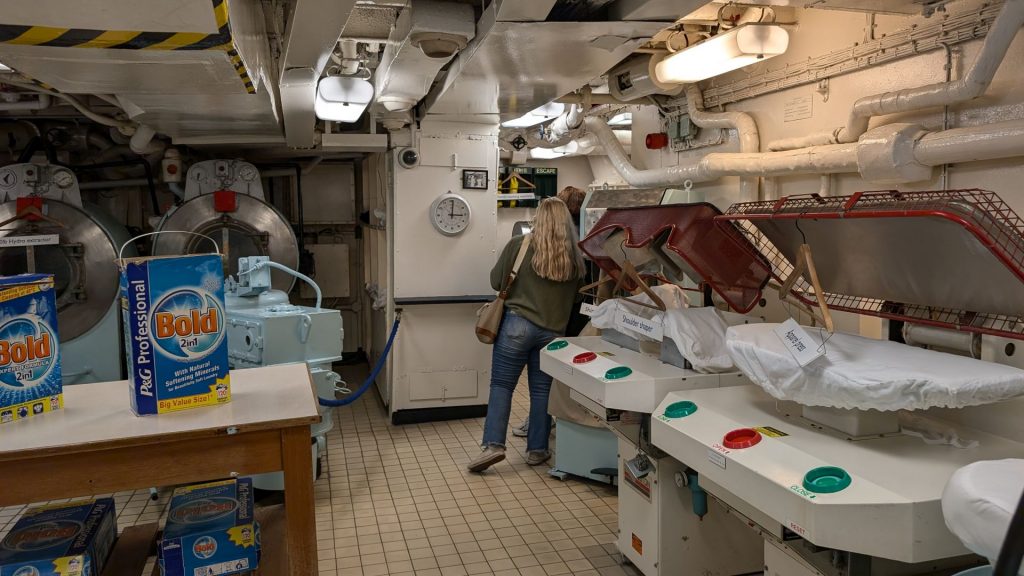
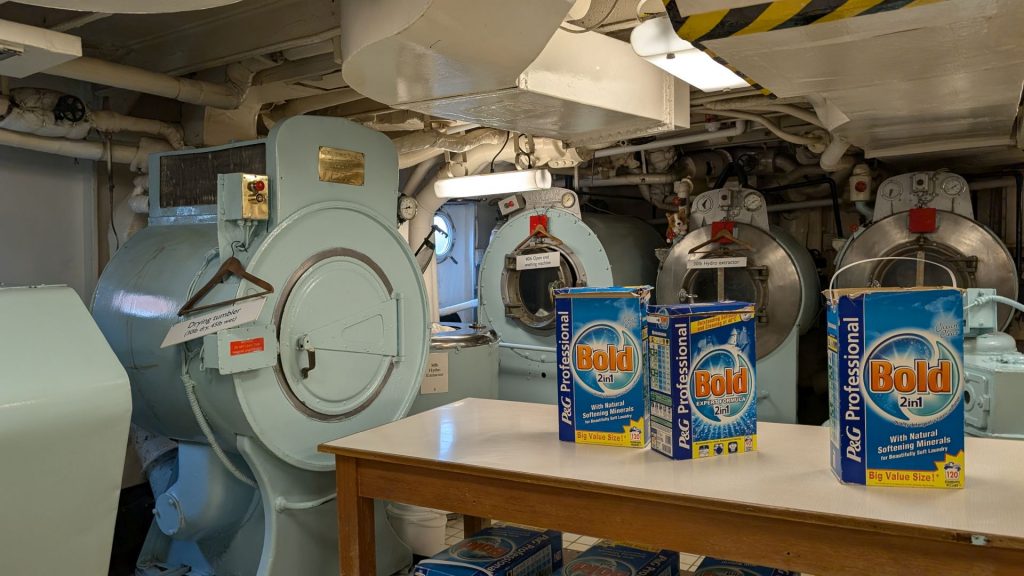
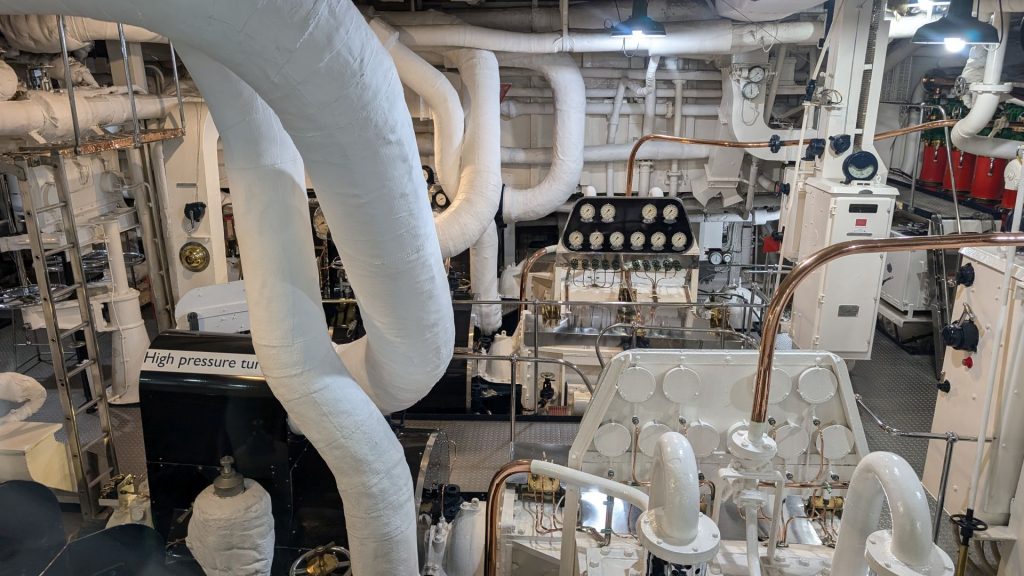
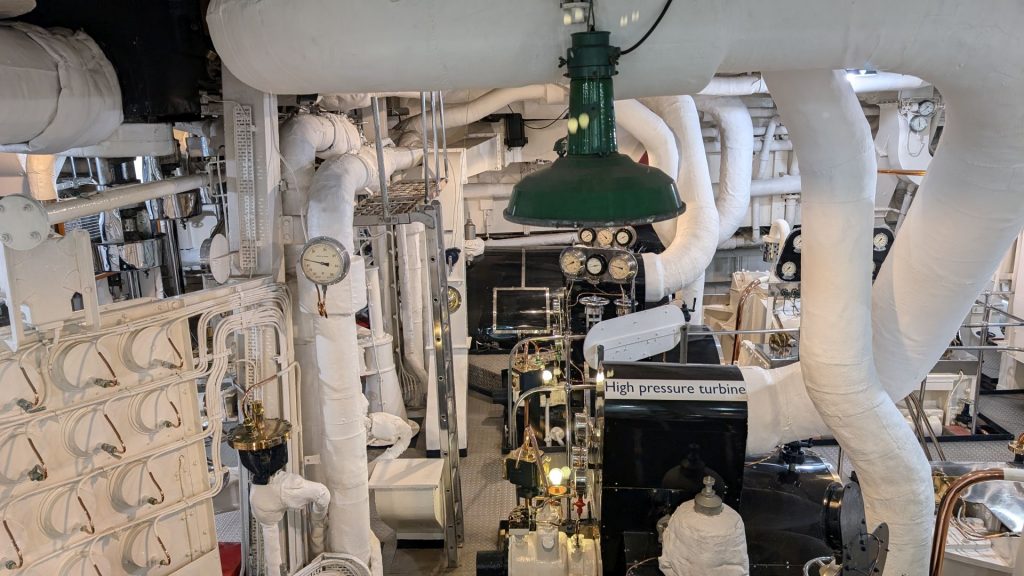
There was a tender on the ship:
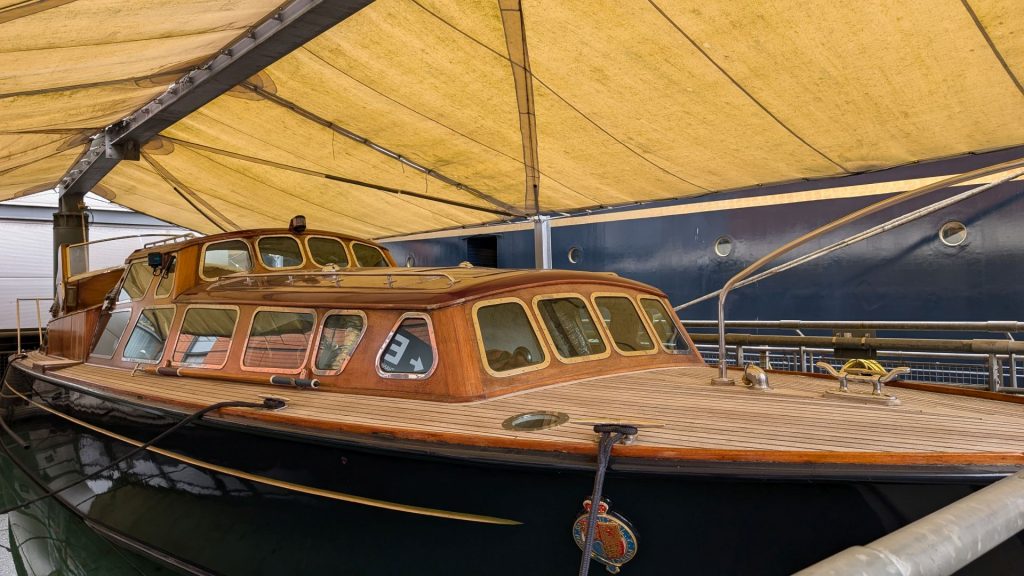
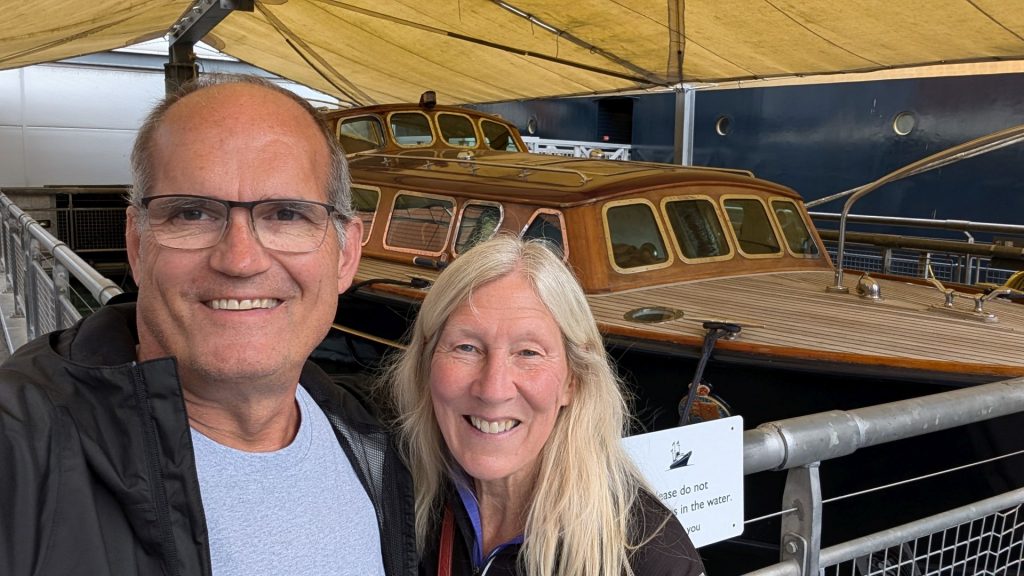
And vehicles (not just this one):
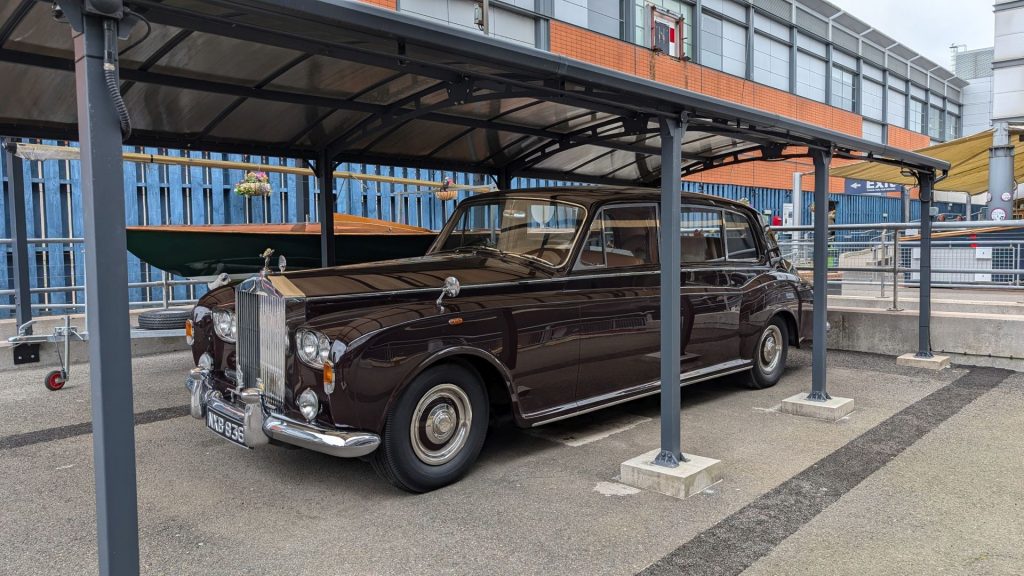
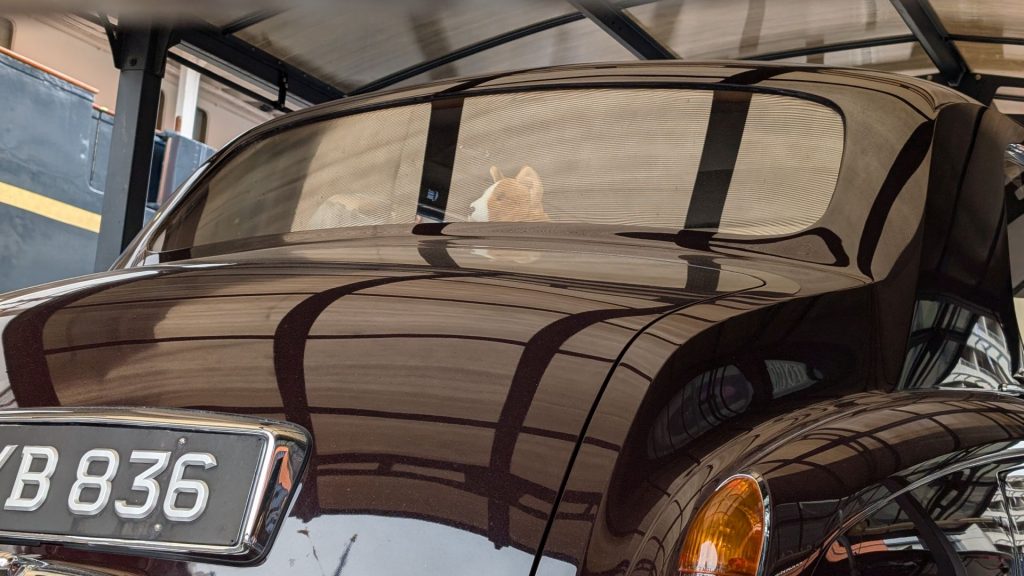
And this boat (in addition to lifeboats, of course):
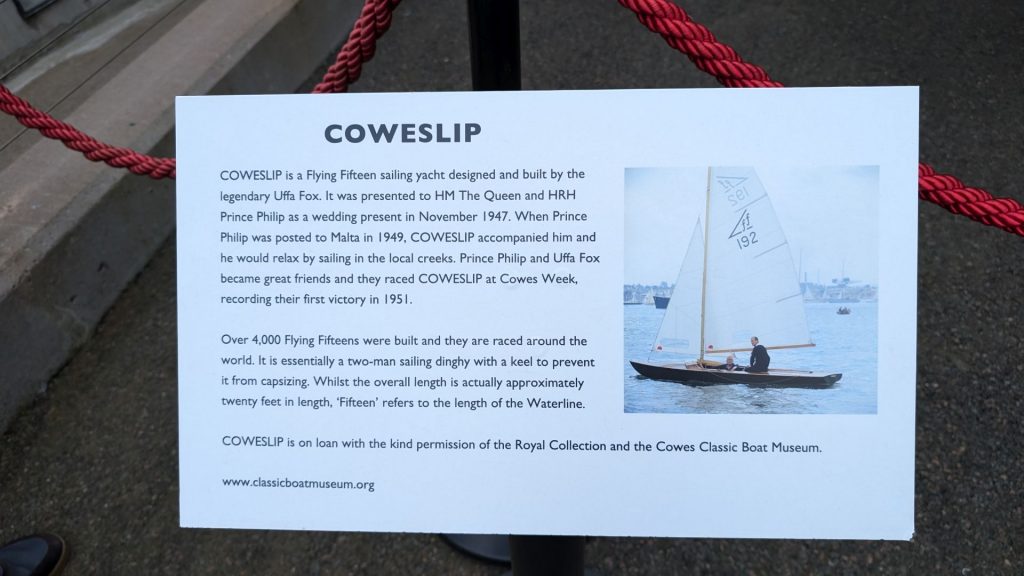
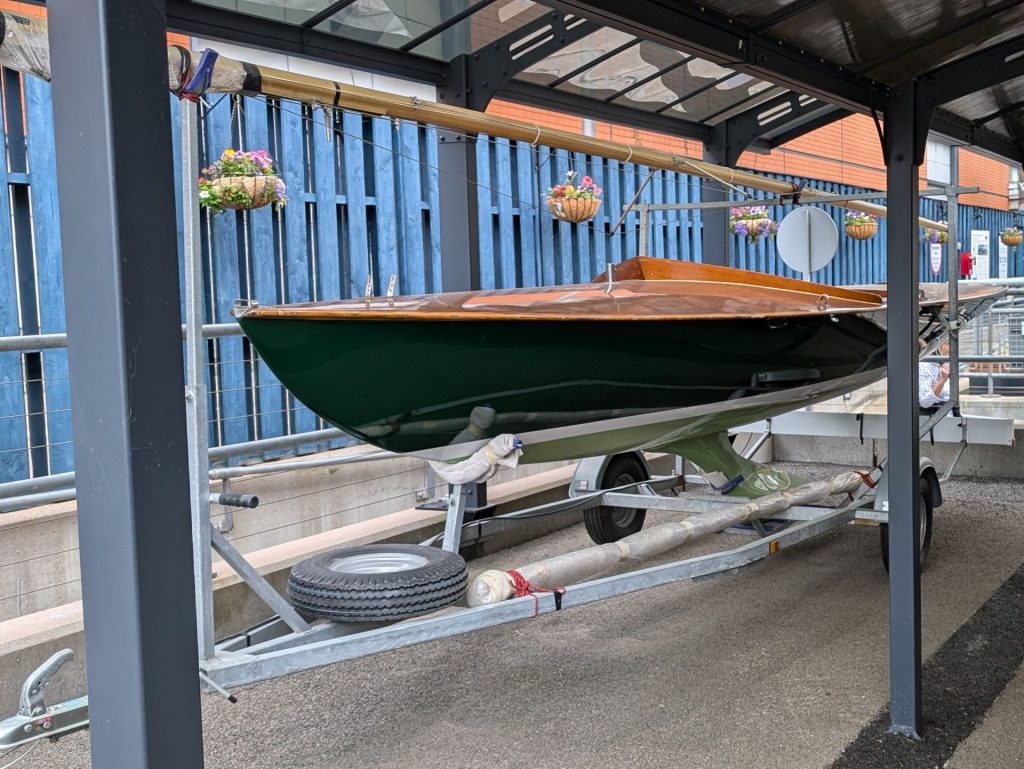
It was time to leave. Bye, bye Britannia!
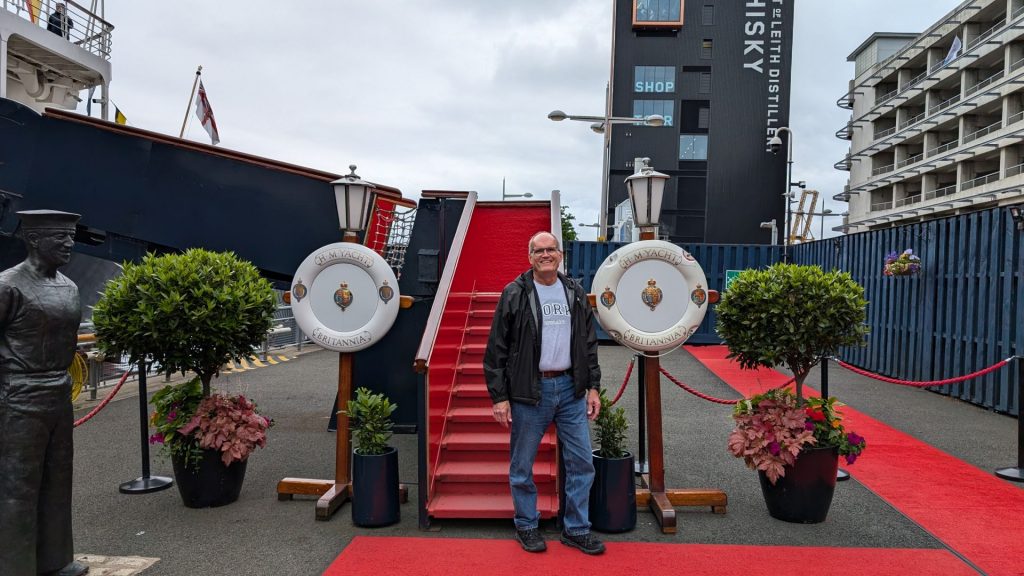
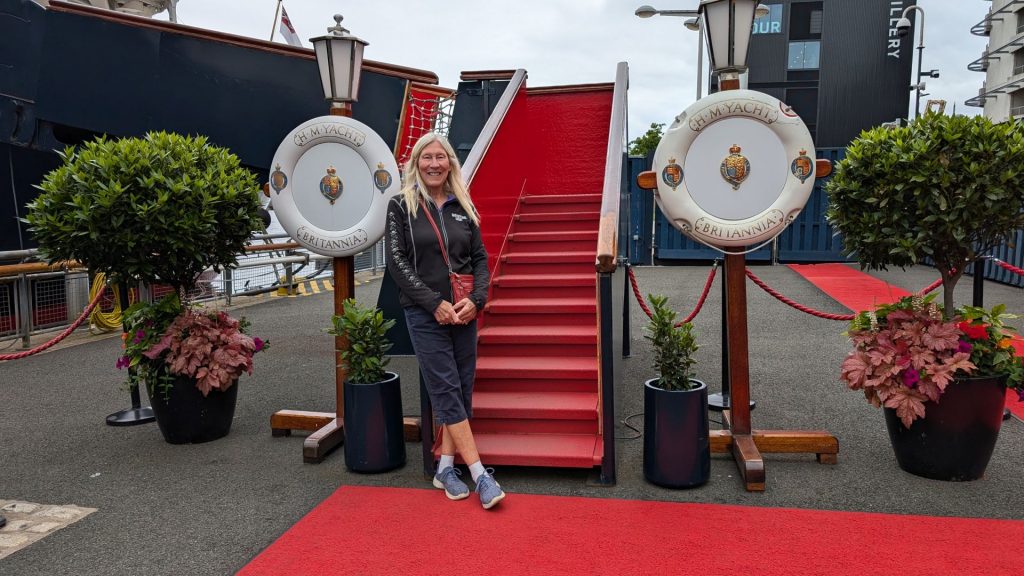
Our next objective was to stroll through the beautiful and relaxing Princes Street Gardens and to see the Ross Fountain. The gardens were indeed lovely and had some nice views of the surrounding cliffs. And don’t forget the statues – I always find them to be of interest to see who is being honored.
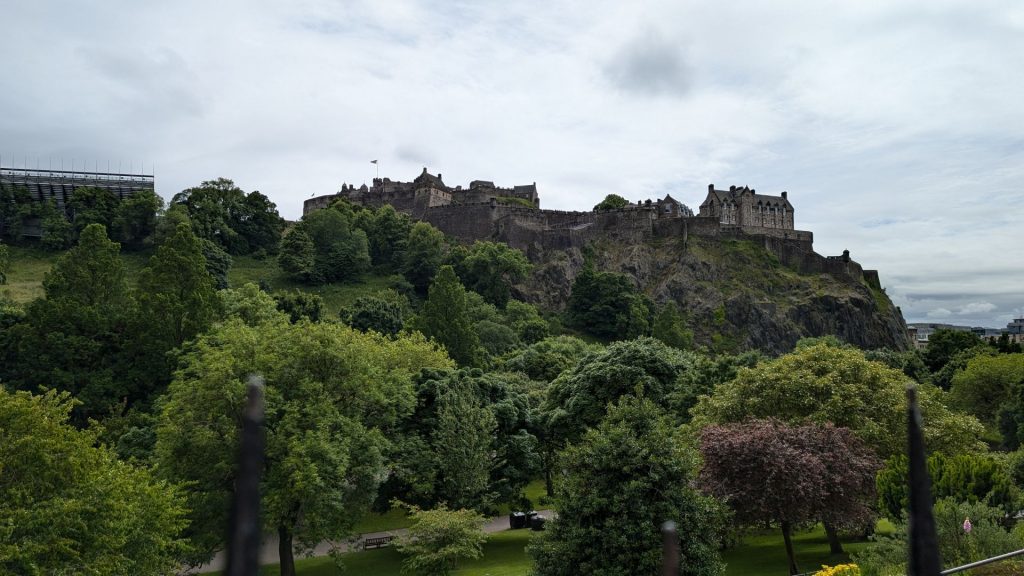
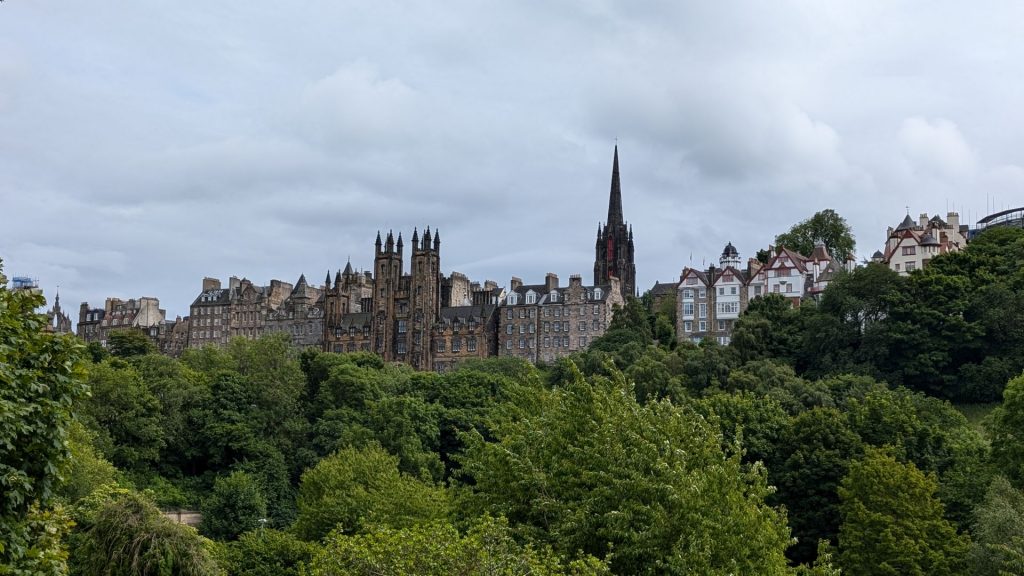
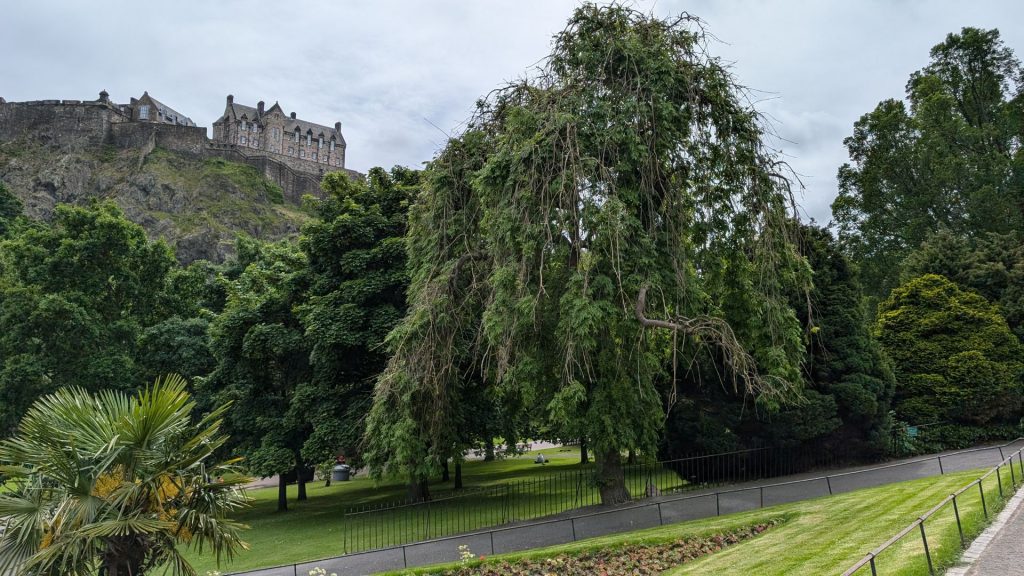
In case it is difficult to read the plaque below, I will tell you that the statue of the dude on the horse is in memory of the officers, non-commissioned officers and men of The Royal Scots Greys who gave their lives for their country in the Boer war 1899-1902. It then lists names.
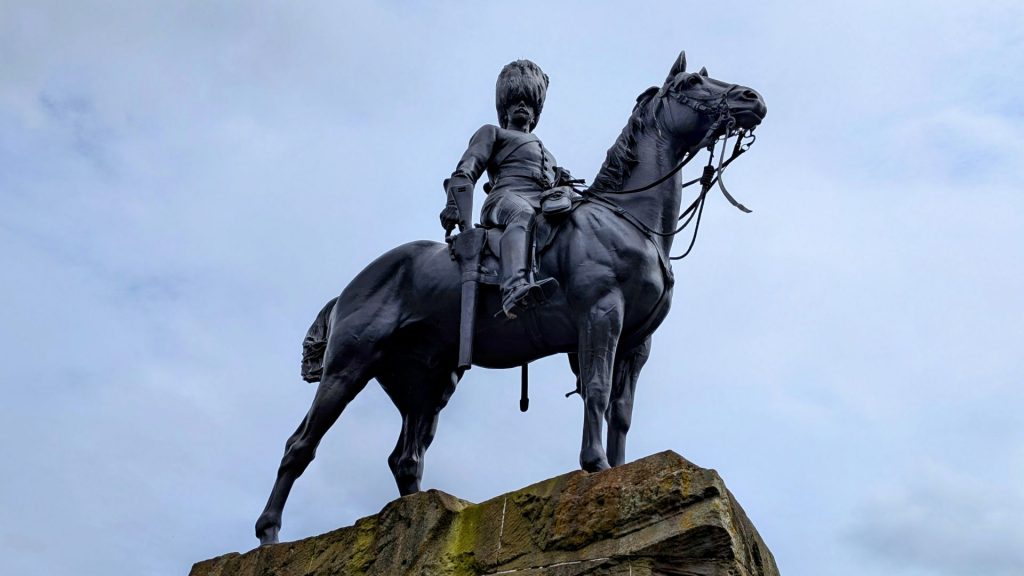
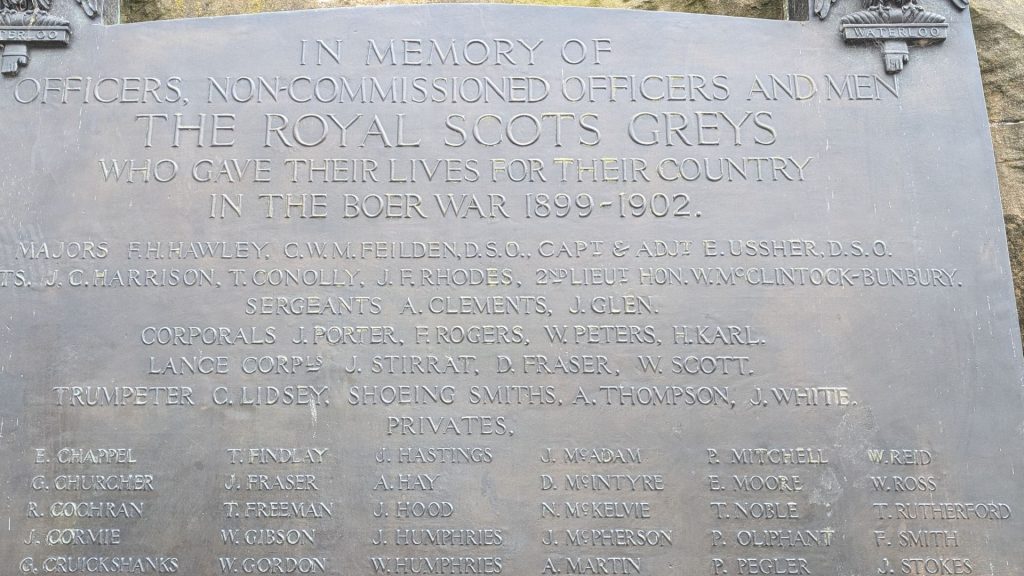
Thomas Guthrie FRSE (see the picture of his statue below) was a Scottish divine and philanthropist, born at Brechin in Angus. He was one of the most popular preachers of his day in Scotland, and was associated with many forms of philanthropy—especially temperance and Ragged Schools, of which he was a founder.
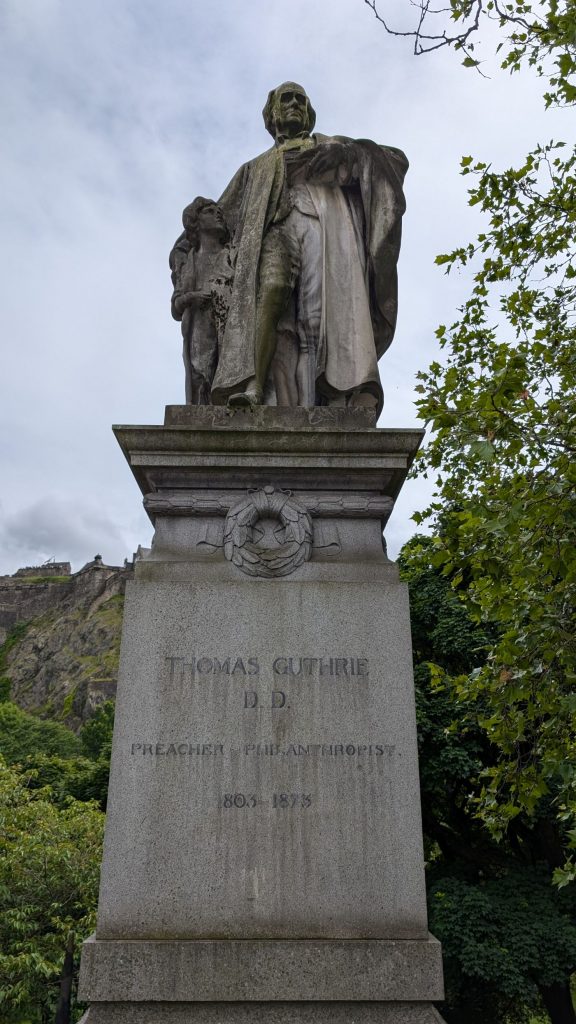
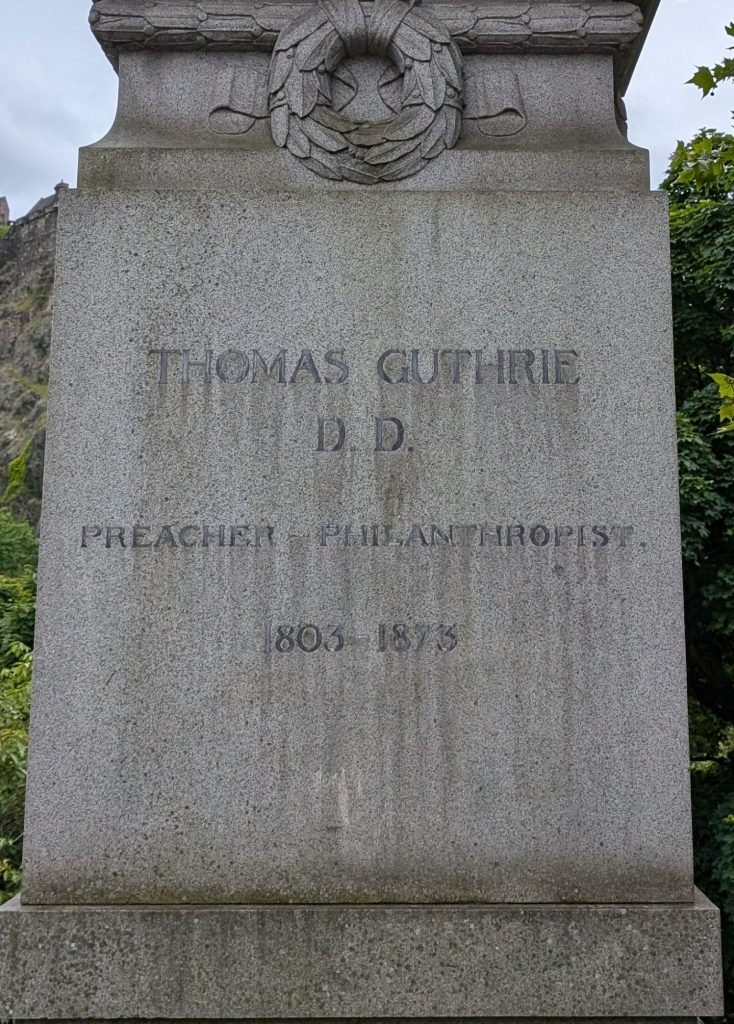
The following Statue of Wojtek the Bear with a Polish soldier was unveiled in Edinburgh in 2015. I had not heard the tales of Wojtek the Bear (I don’t get out much). Having seen this statue led me to investigate. Feel free to read this (it is a good read and I recommend it!): https://www.britannica.com/animal/Wojtek-the-Bear, but I will share some information here for those who don’t want to dig too deep. 🙂
Wojtek the Bear was a Syrian brown bear adopted by soldiers in the Polish army during World War II. The bear, who was initially given the rank of private, eventually rose to the rank of corporal and served mainly as a morale booster for the soldiers.
How it happened: In 1942, near the city of Hamadan, Iran, a young shepherd traded a Syrian brown bear cub in a burlap sack to members of the company in exchange for a Swiss Army knife, canned beef, and chocolate. The soldiers adopted the cub, whose mother likely had been killed by hunters. They fed him condensed milk from an empty vodka bottle, honey, fruit, and marmalade. The bear, whom they named Wojtek (short for Wojciech; Polish: “joyful warrior”), came to trust his human companions.
A soldier named Peter Prendys became Wojtek’s caretaker. Prendys taught the bear to salute, wave, and march, and Wojtek appeared to happily perform these duties. When not training, Wojtek amused himself with the soldiers in the camp by engaging in their activities, including wrestling and boxing. In addition to double rations, the soldiers gave the bear treats, cigarettes, and beer.
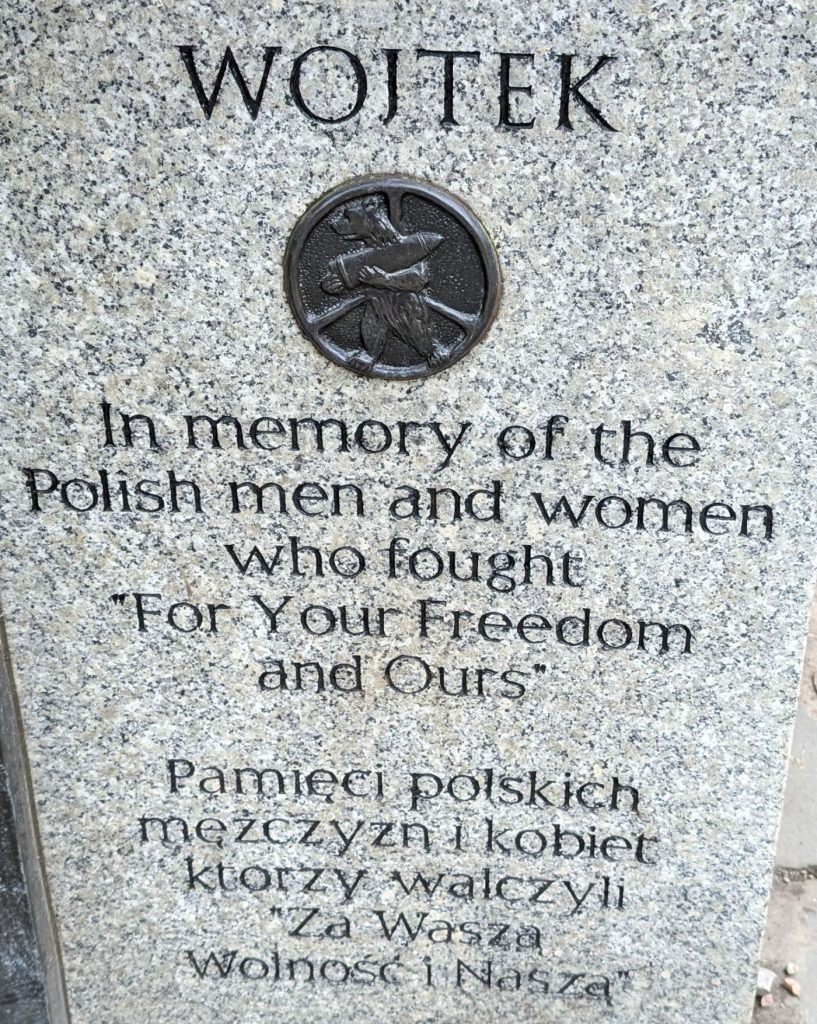
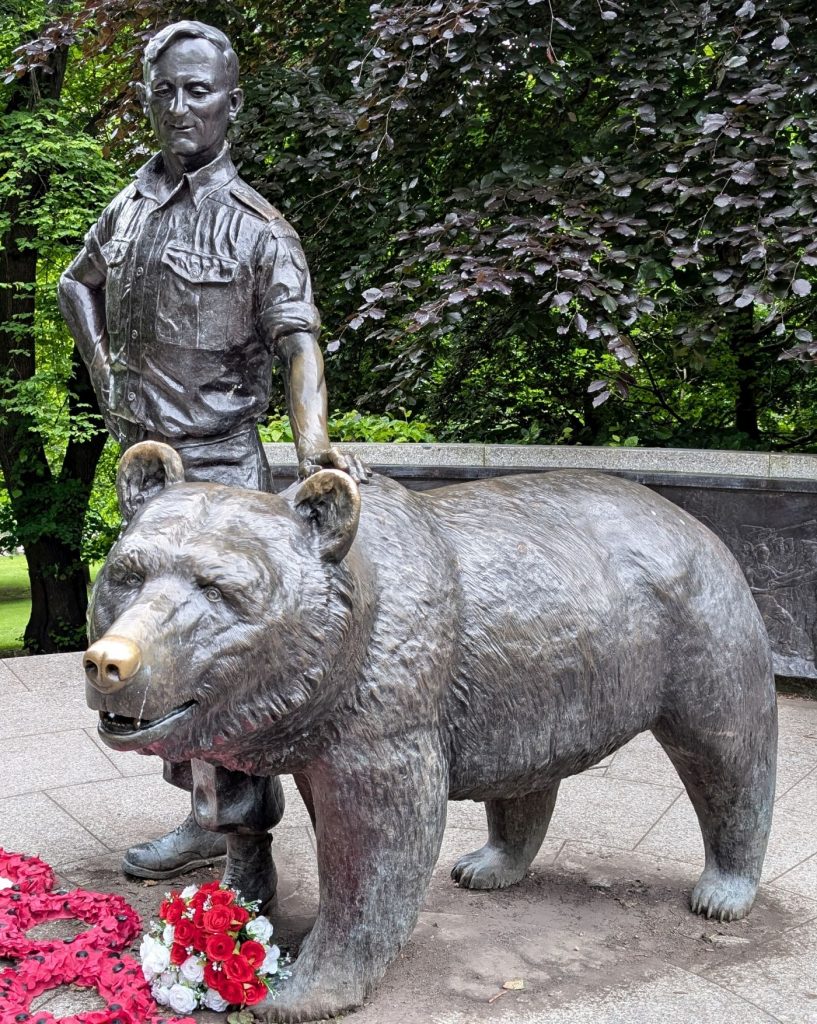
The Call 1914, is described as such (you can’t make out all of the details in the picture I took):
“A bronze kilted figure with a rifle across his knee is seated on a stone pedestal. He looks up with an earnest gaze towards Edinburgh Castle. Behind the statue is a long retaining wall with a bronze relief in three sections depicting the call to arms: at the front are the pipes and drums; behind is a recruiting party, and at the back are men from all walks of life, including miners, shepherds and fishermen (‘a cross section of manhood of Scotland in 1914’). Above the frieze (at the top of the wall) are two intertwined wreaths, each containing a shield; one bearing the stars and stripes the other the St Andrew’s Cross. On the piers of the retaining wall, to each side of the frieze, are carved thistles.”
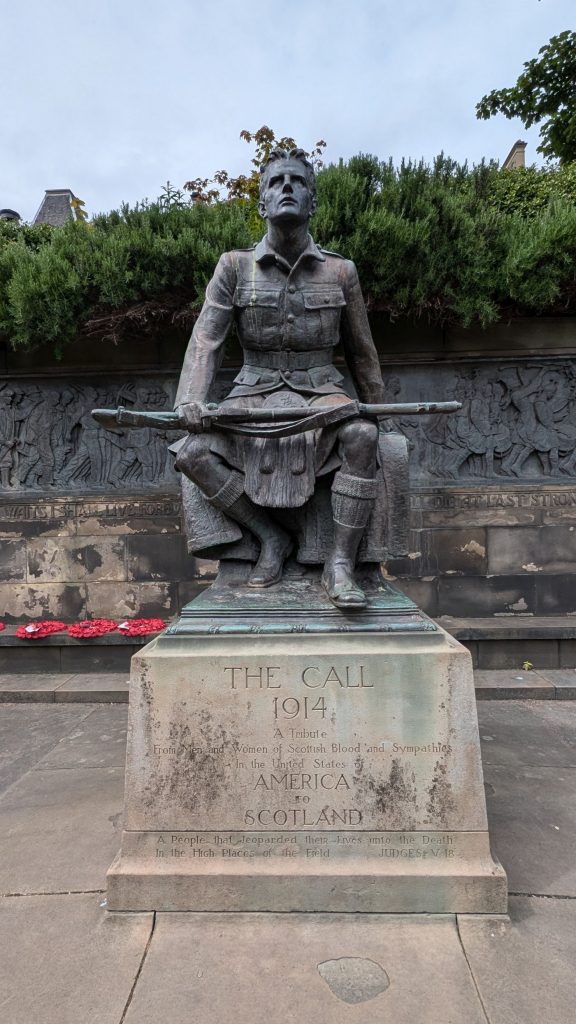
This should be easier to read:
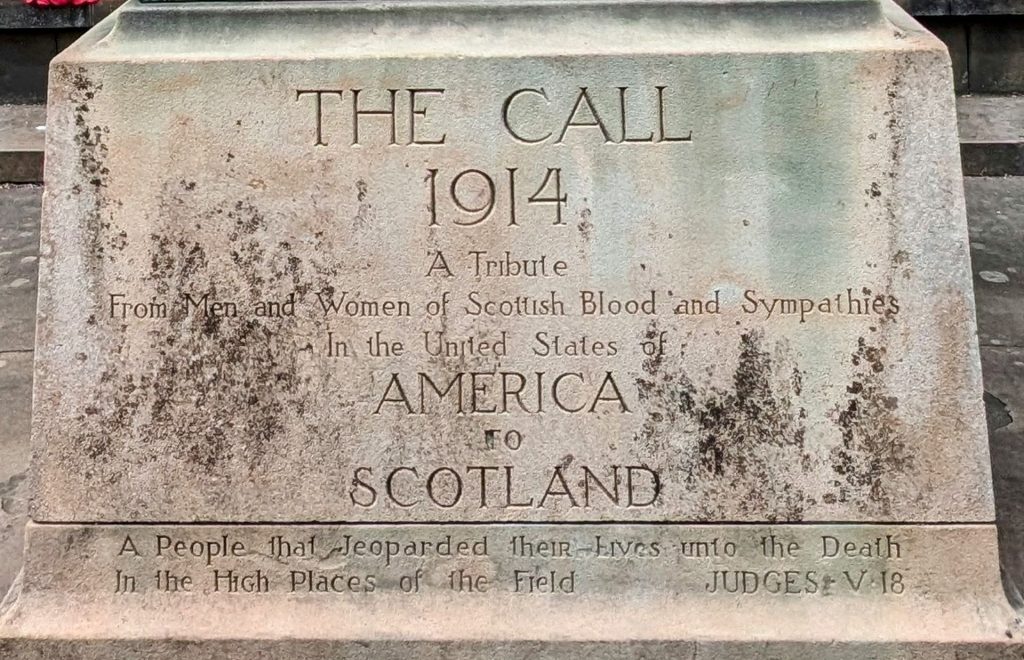
We hadn’t heard of the Ross Fountain, either. First, let me tell you that it is big (over 40 feet tall) and impressive! Here’s a bit of info (in addition to what you will find from the link above): Sculpted by artist Jean-Baptiste Jules Klagmann, this fountain has been made from cast-iron, a shining example of 19th century sculpture. If you take a closer look at the base of the fountain, there are mermaids, walrus and lion heads and cherubs. At the top are featured four female figures representing science, arts, poetry and industry.
From the source above: The fountain is a magnificent example of 19th century cast-iron work, in the neoclassical style commonly known as Beaux Arts. Its importation from France marked a pivotal moment in Edinburgh’s civic development. The fountain’s installation represented a significant investment in enhancing the city’s public spaces, reflecting a commitment to providing residents and visitors with a visually stunning and enjoyable urban environment.
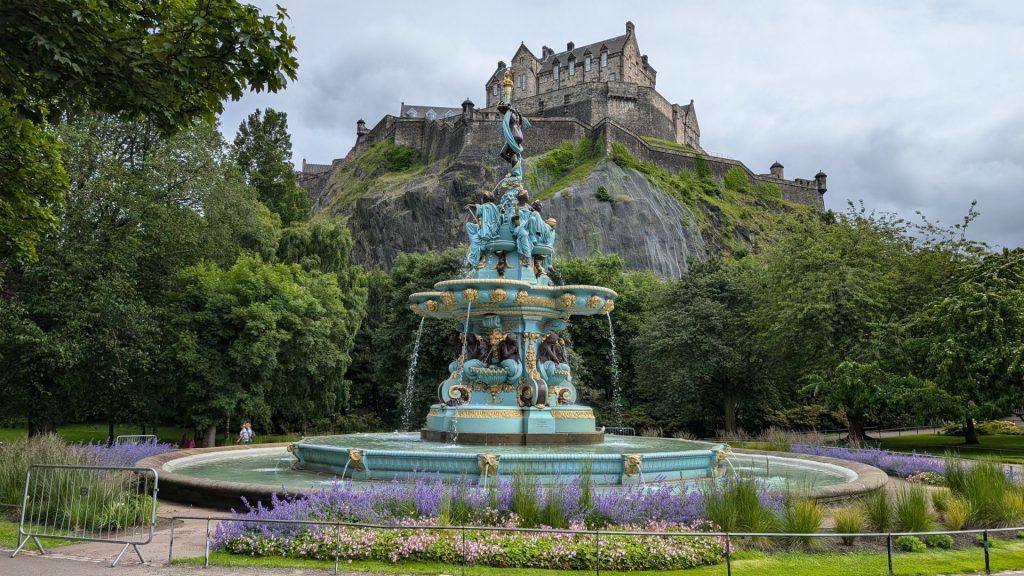
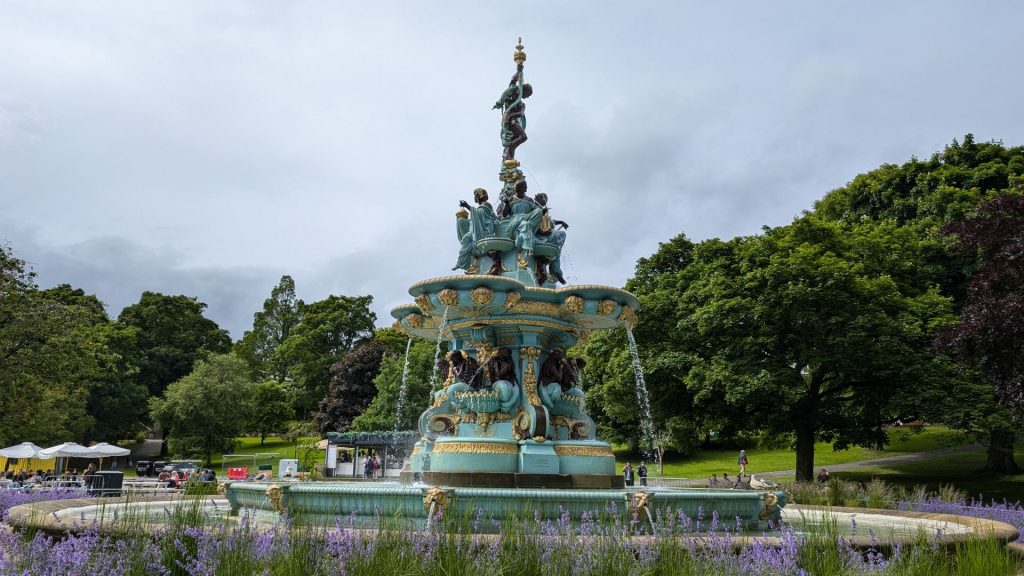
We found the visit to the gardens and fountain to be very relaxing and enjoyable. We now had just one thing left on our agenda that day (before going to the Tolbooth Tavern for dinner). That one thing was the Palace of Holyroodhouse.
The Palace of Holyroodhouse is the official residence of the Monarchy in Scotland. Founded as a monastery in 1128 at the end of the Royal Mile in Edinburgh, the Palace of Holyroodhouse has a close association with the History of Scotland. The building itself is an architectural gem with impressive Baroque decoration.
During the Middle Ages the monarchy left the cold and damp Edinburgh Castle and settled in the comfortable Holyrood Abbey guesthouse. In 1503 James IV constructed the first palace alongside the Abbey. Many years later, James V built a tower where Mary, Queen of Scots lived between 1561 and 1567.
It wasn’t until a century later, from 1671 to 1678, that the Baroque palace was built as it stands today. It was designed for Charles II with the restoration of the monarchy.
Presently, it is one of the most beautiful palaces in Scotland. The Palace is a close focus for national celebrations and events in Scotland, most notably the Monarch’s “Holyrood Week,” which usually runs from the end of June to the beginning of July every year.
This link has all sorts of interesting info about the Palace: https://www.rct.uk/visit/palace-of-holyroodhouse
Unfortunately, I didn’t plan well (I’ve done this a bit too often!) and it was too late to visit the inside when we arrived. Here’s what we can show you:
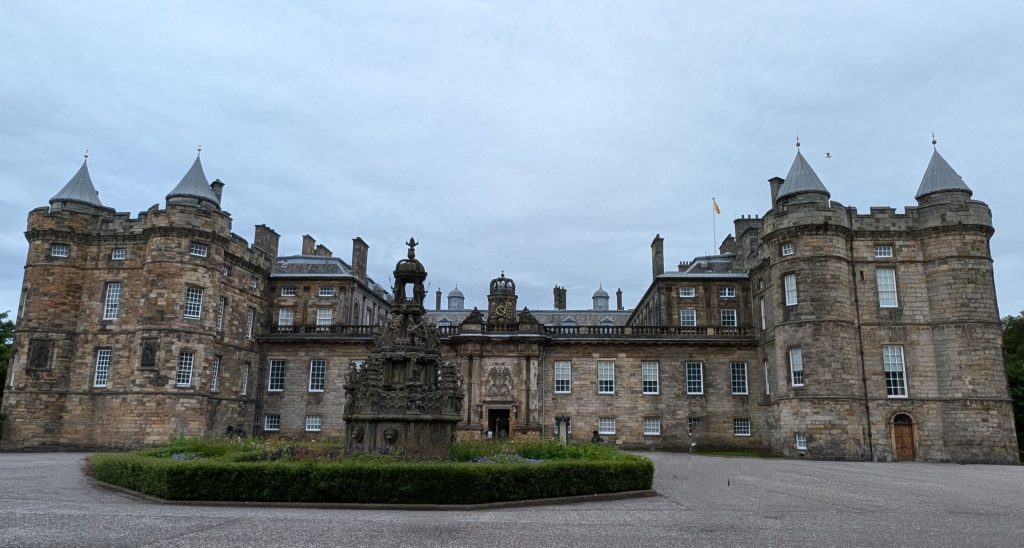
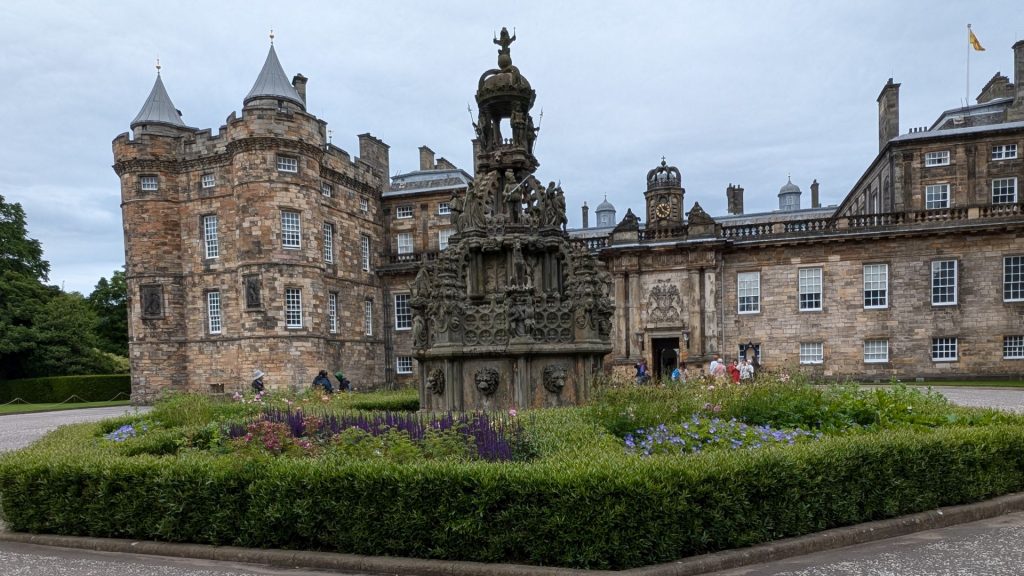
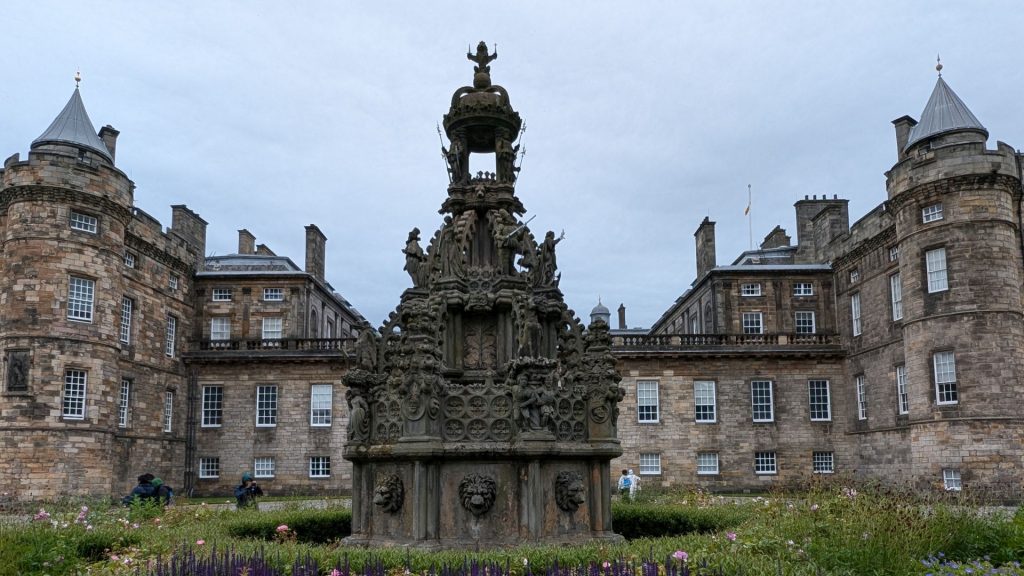
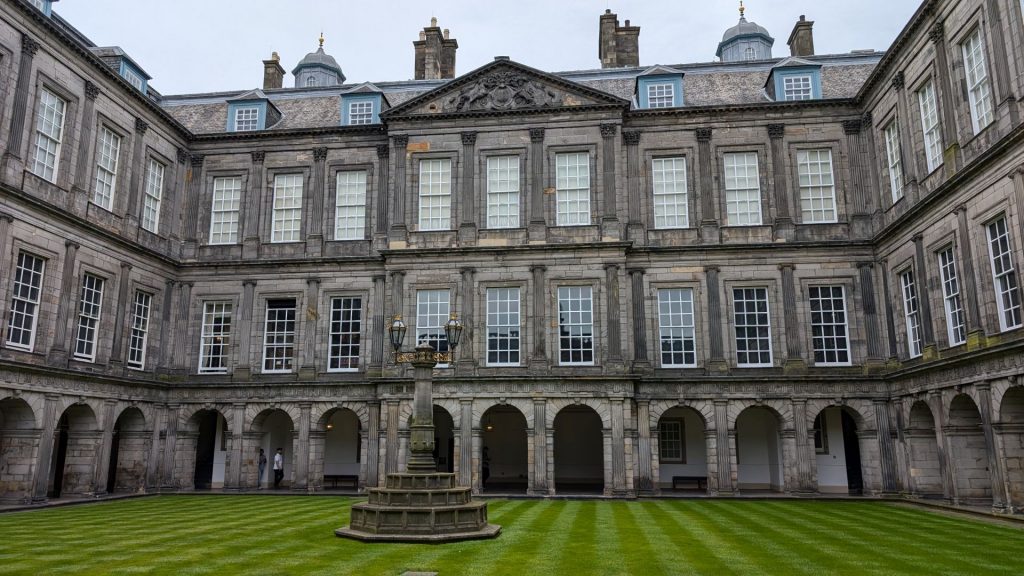
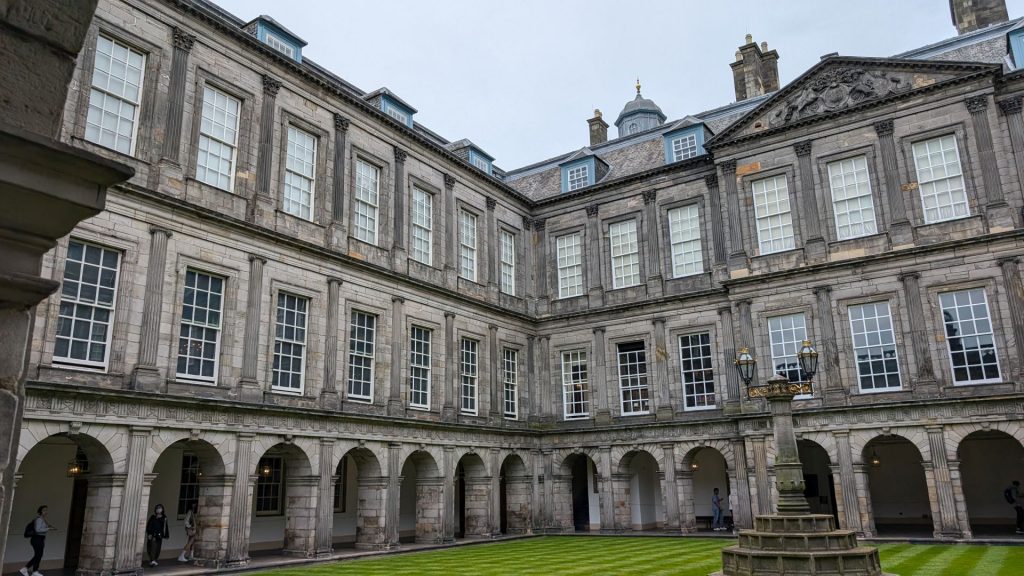
Holyrood Abbey
Standing next to the Palace of Holyroodhouse and overlooked by the dramatic Salisbury Crags, Holyrood Abbey was once one of the grandest medieval abbeys in Scotland.
The Abbey was founded in 1128 after King David I saw a vision of a stag with a cross or ‘rood’ between its antlers while hunting in the forest below the slopes of Arthur’s Seat. He decided to build a new religious foundation dedicated to the Holy Rood on the site.
The Abbey was enlarged over the centuries and the surviving roofless nave, Romanesque arcading, Gothic windows and vaulted ceiling help visitors imagine the grandeur of this once magnificent building.
In Edinburgh, it was Holyrood Abbey, rather than the Palace, that first became a visitor attraction. In 1758, the Abbey’s wooden roof had been replaced with stone, its weight causing it to collapse ten years later. The ruined church became a popular and romantic sightseeing spot, and it was particularly fashionable to visit the atmospheric ruins by moonlight.
Here are some pictures of what is left of the abbey:
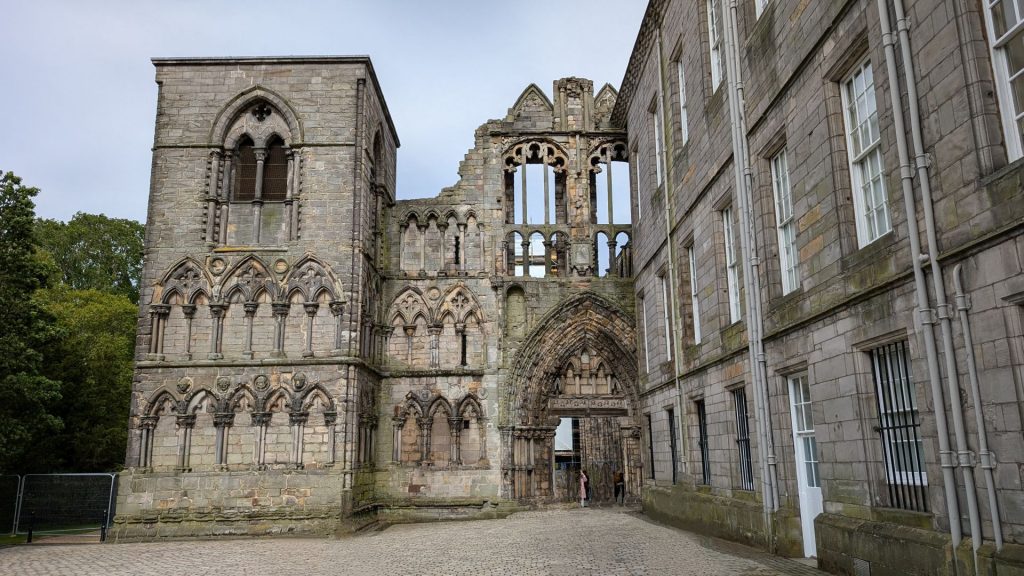
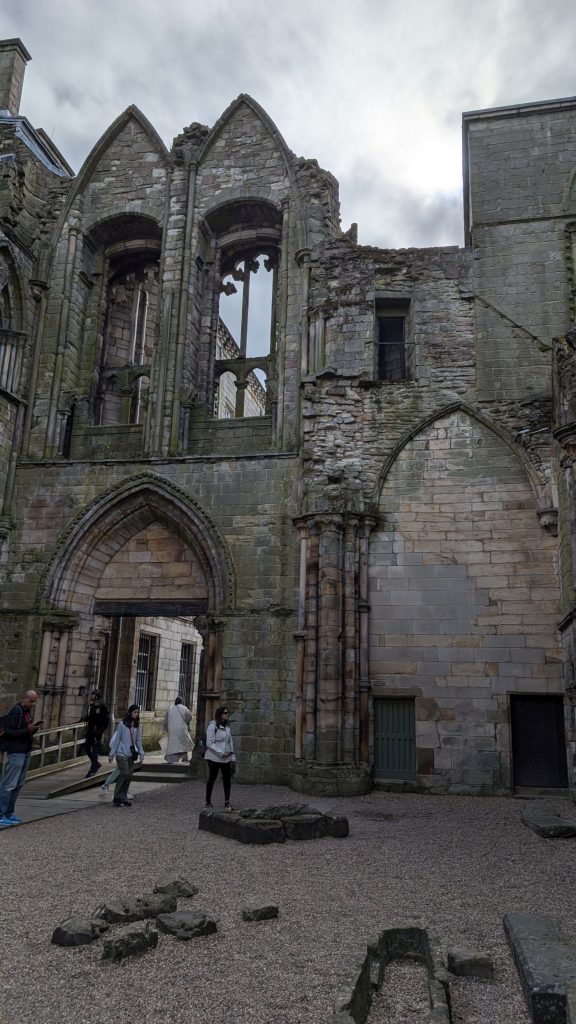
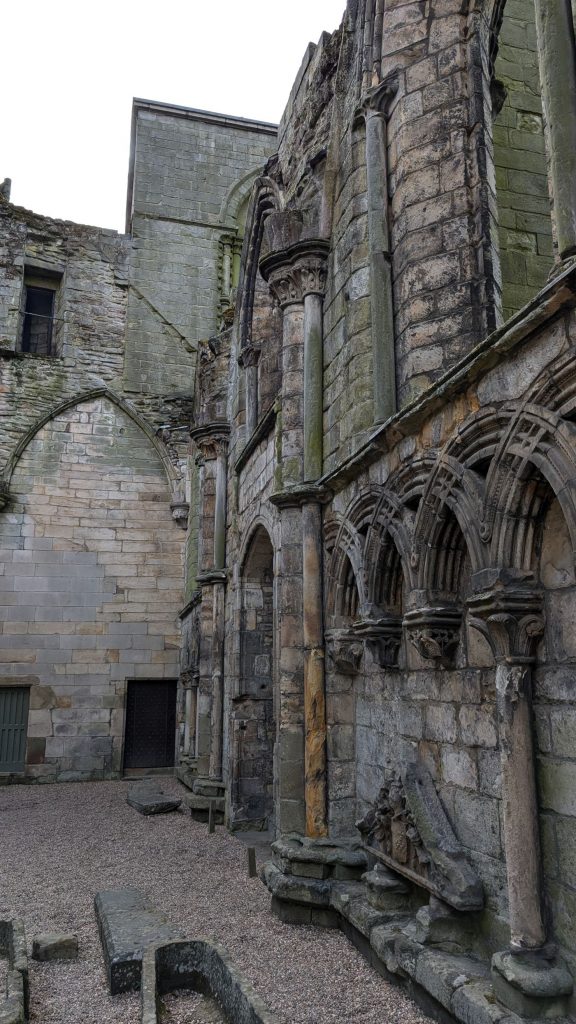
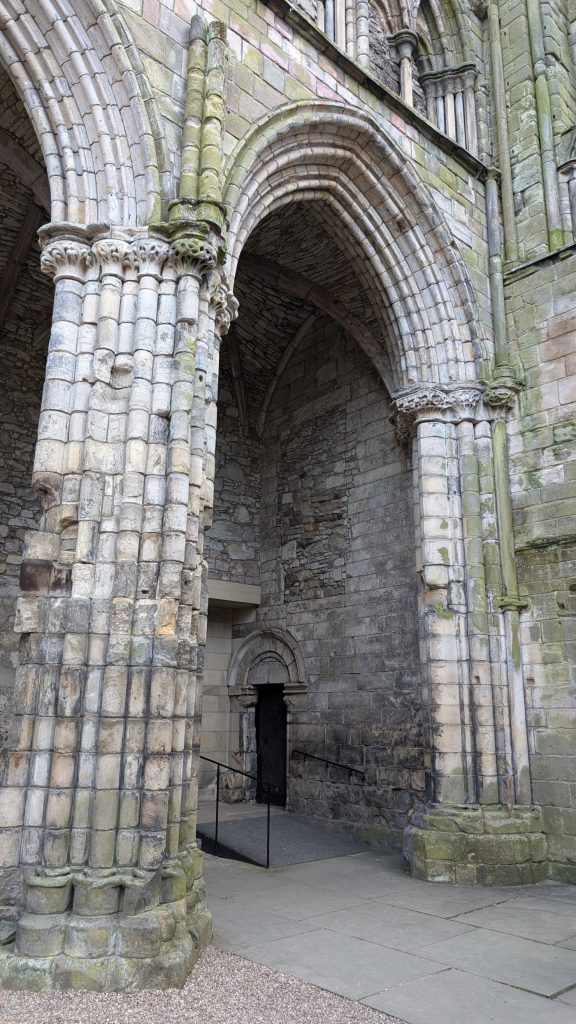
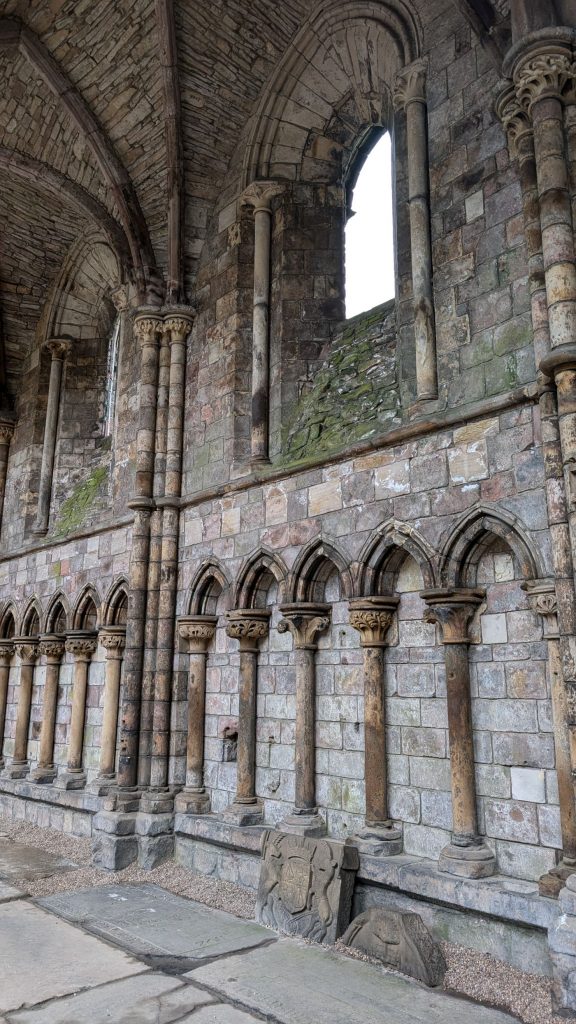
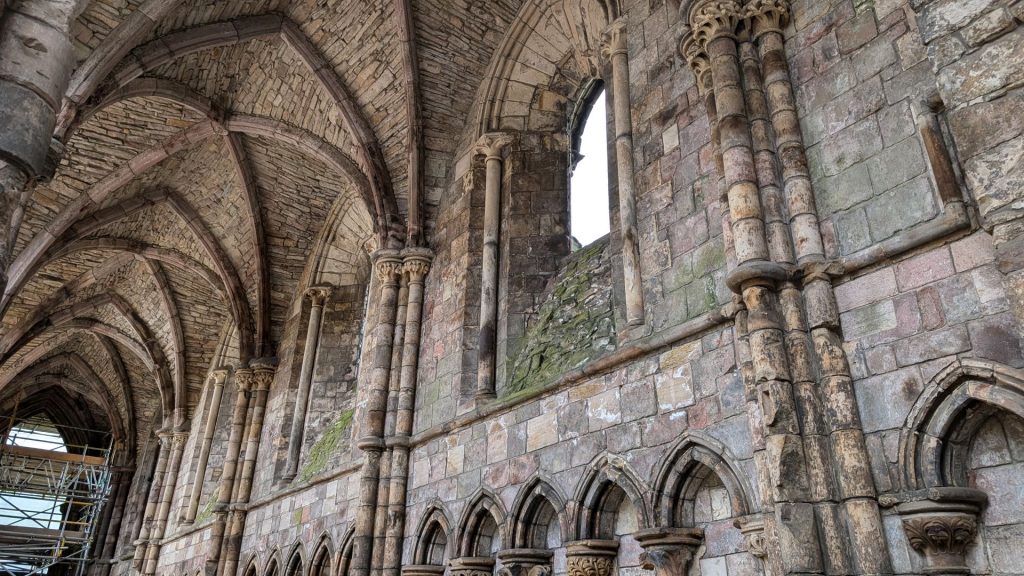
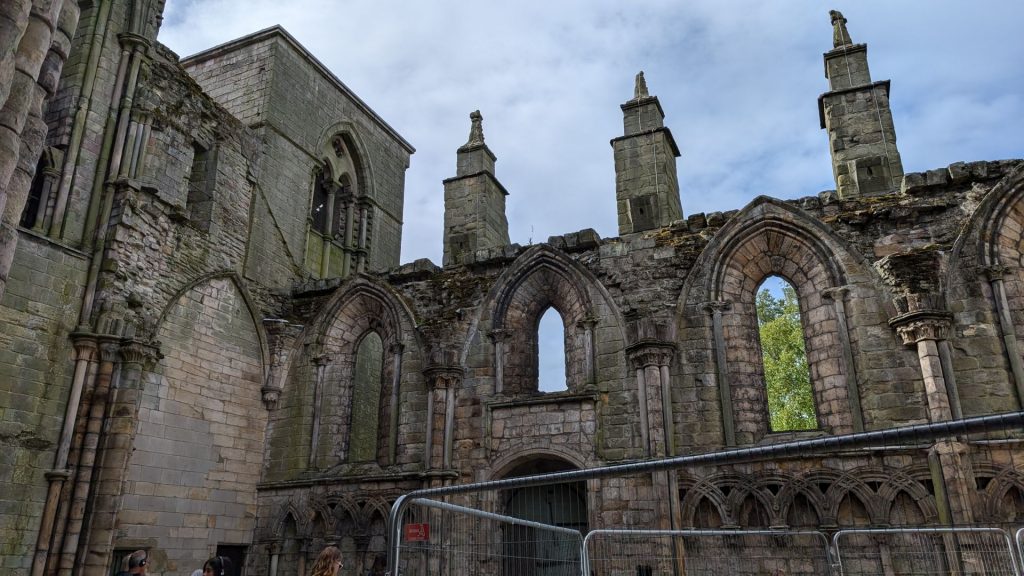
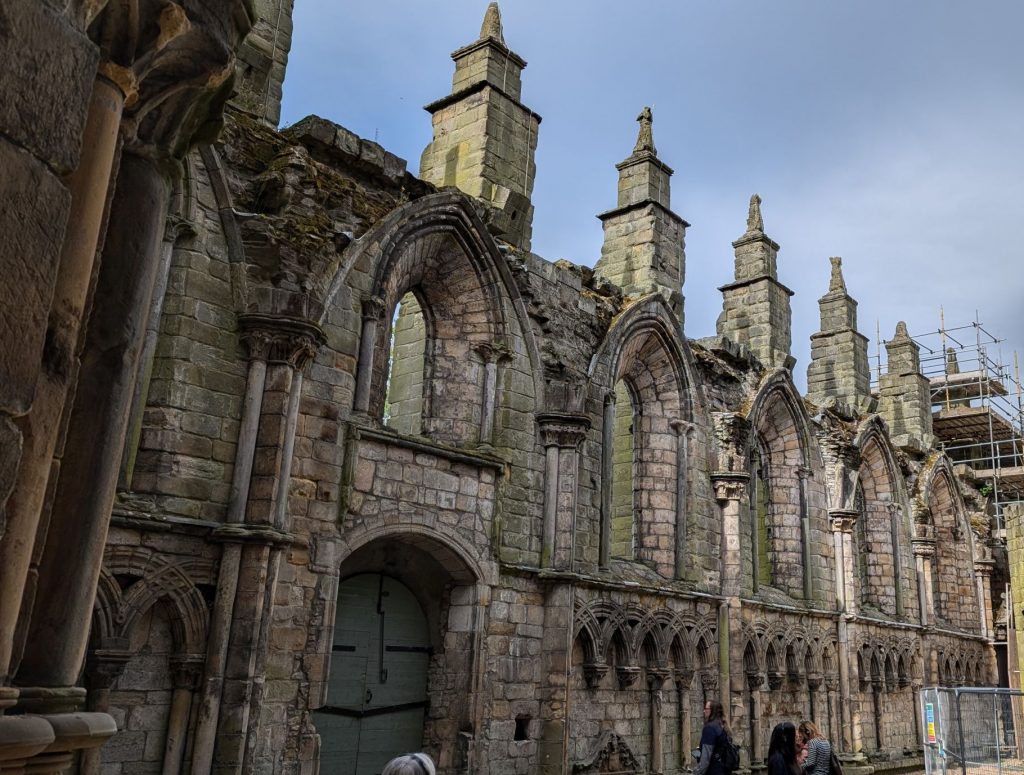
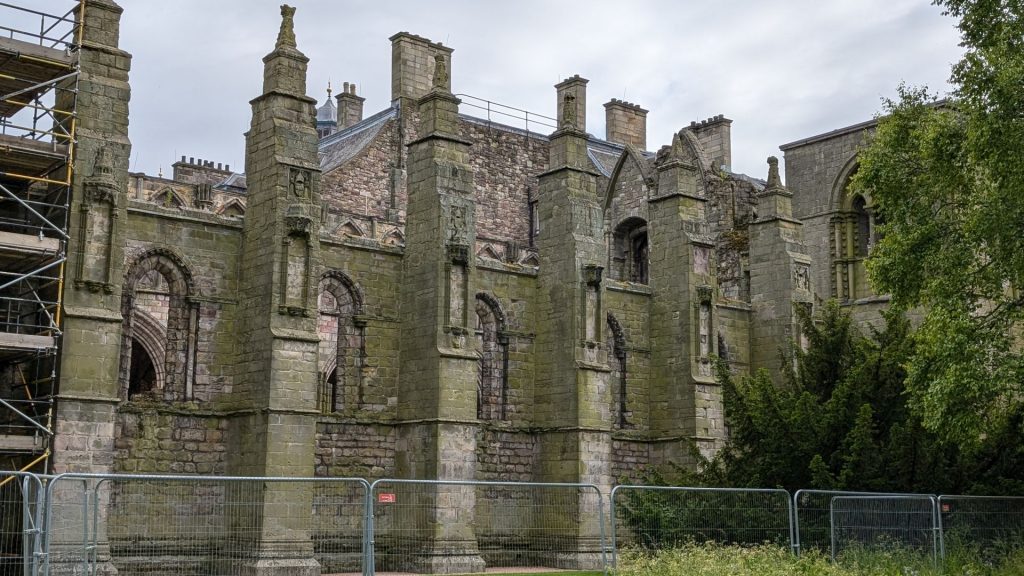
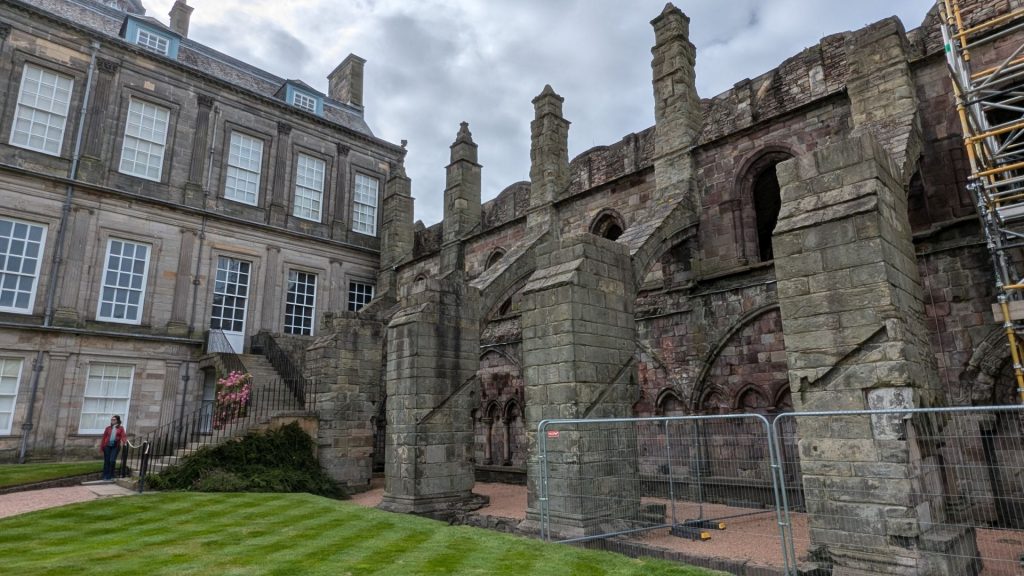
The Gardens
The gardens at the Palace of Holyroodhouse have a long and varied history. The first recorded gardens at the Palace were the medieval gardens cared for by the monks of Holyrood Abbey.
When James IV built the first royal palace in 1503 and Holyroodhouse became the main royal residence in Scotland, the gardens were the setting for tournaments, hunting, hawking and archery. There was even a tennis court and a menagerie with a range of animals, including lions, tigers and bears.
By the time Mary, Queen of Scots lived at the Palace there was a series of enclosed gardens, including a walled Privy Garden to the north. Mary often practiced archery, hawking, hunting (for which wild boars were brought from France), bowls and tennis in the garden.
Below on the left: A sundial originally placed in the center of the King’s Garden at Holyrood, coinciding with Charles I’s Scottish coronation at the Abbey of Holyrood.
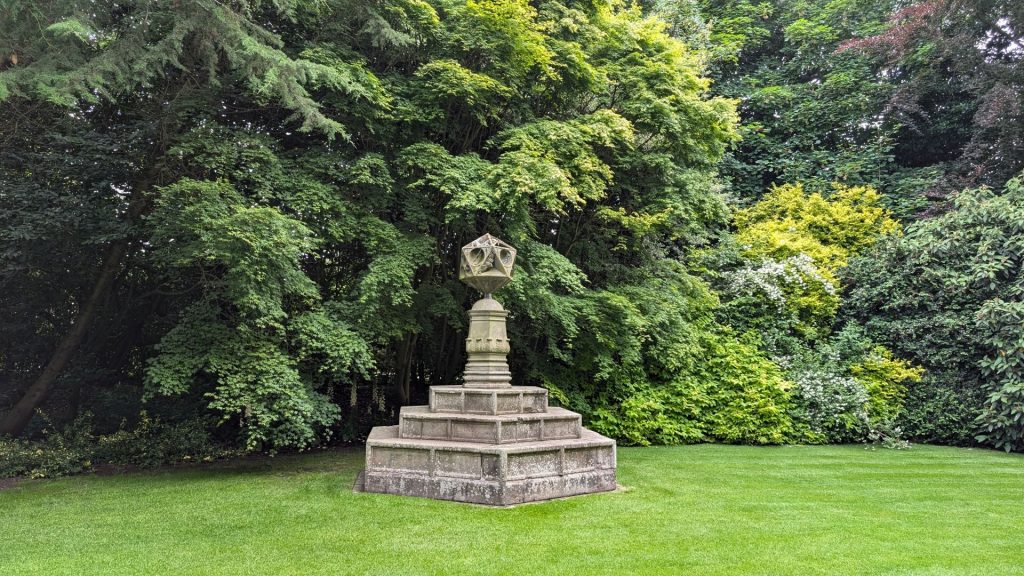
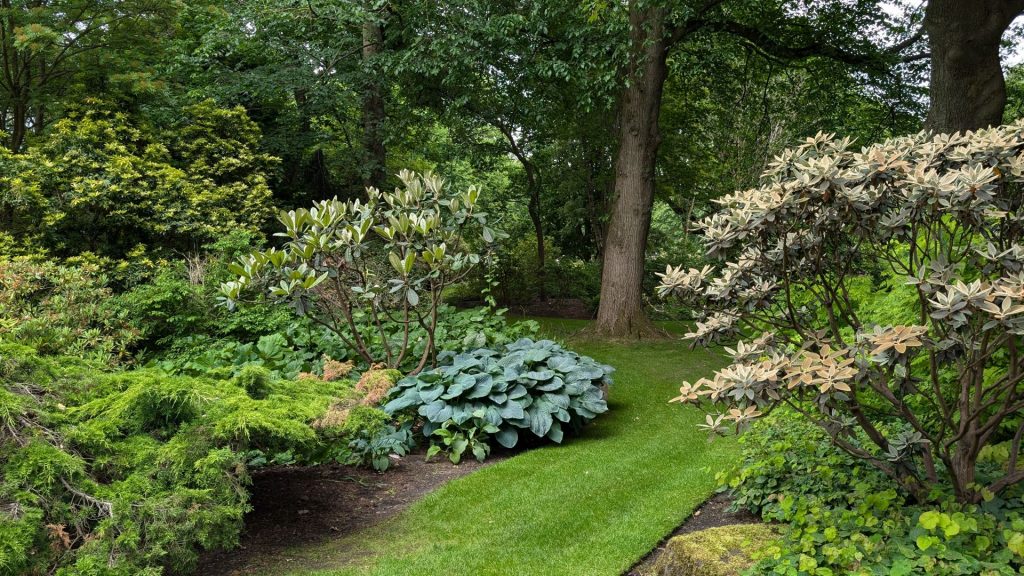
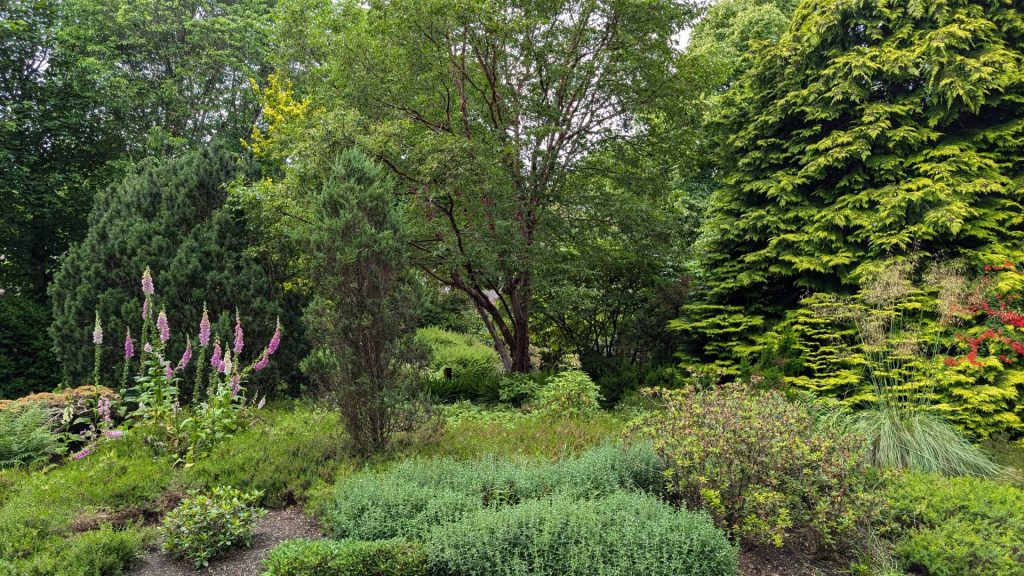
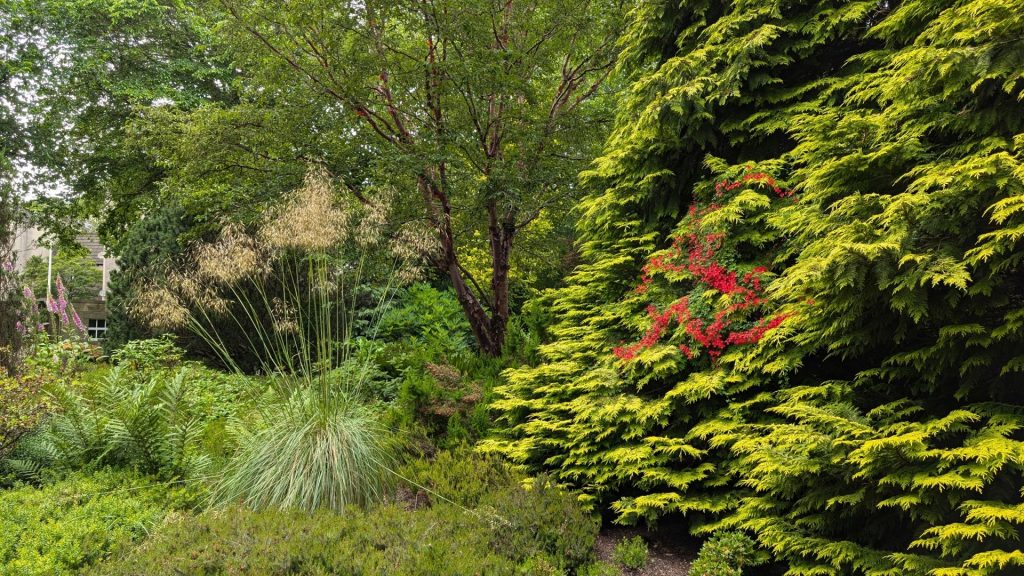
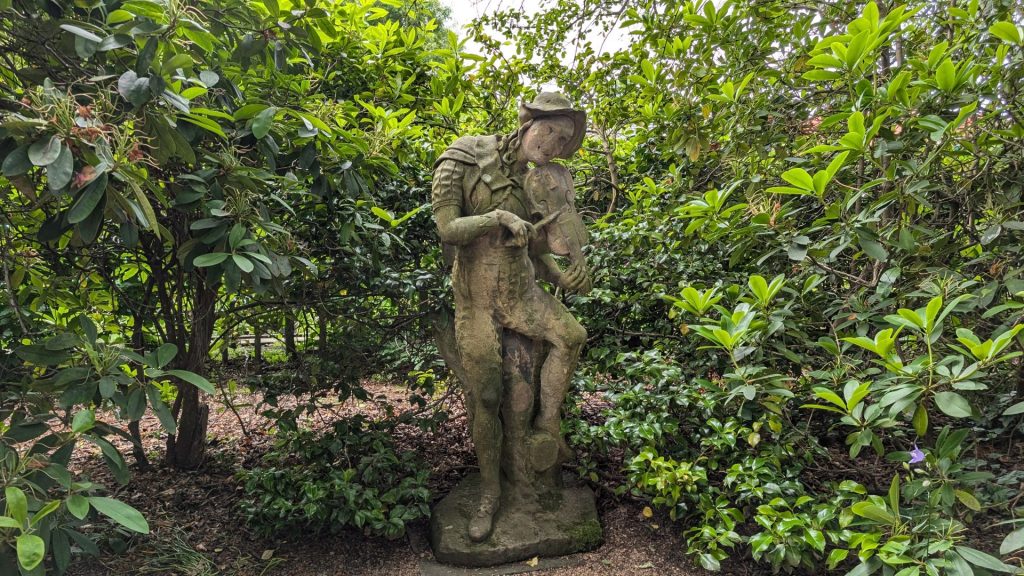
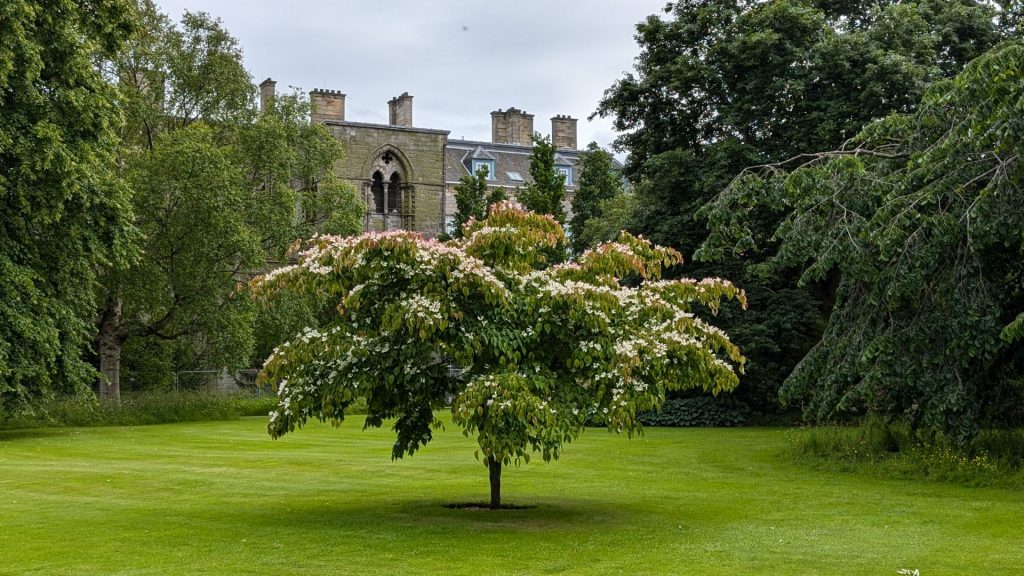
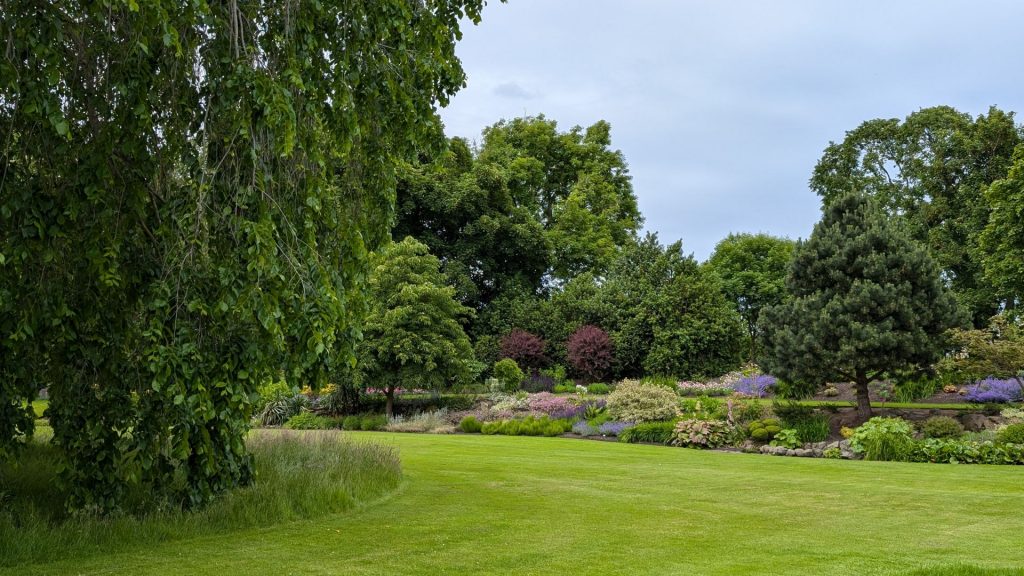
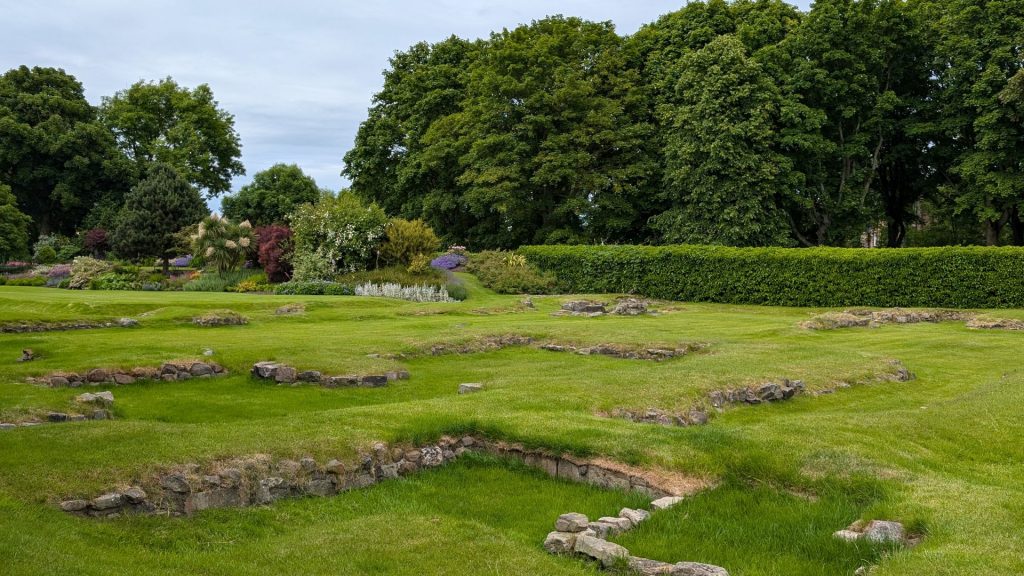
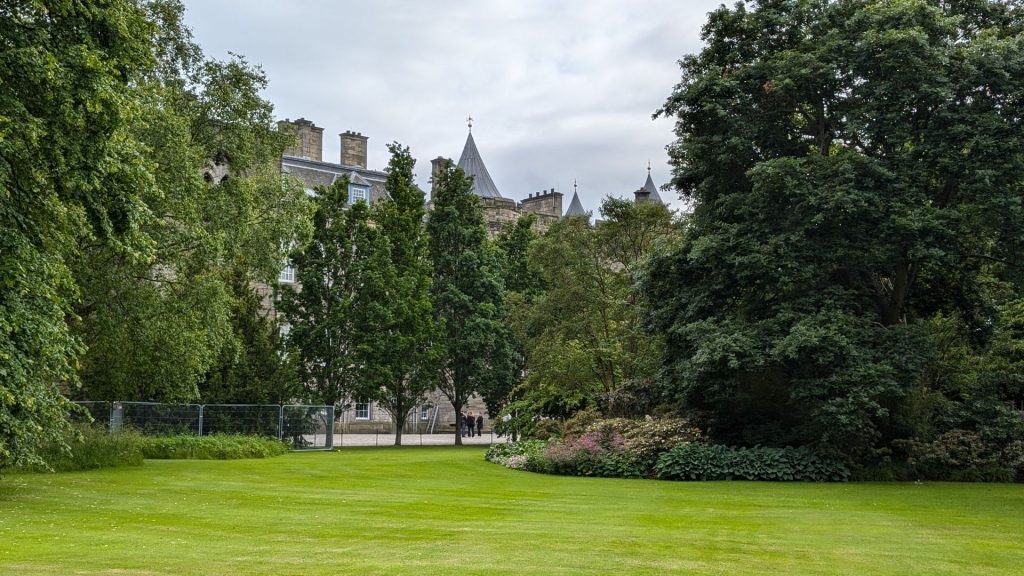
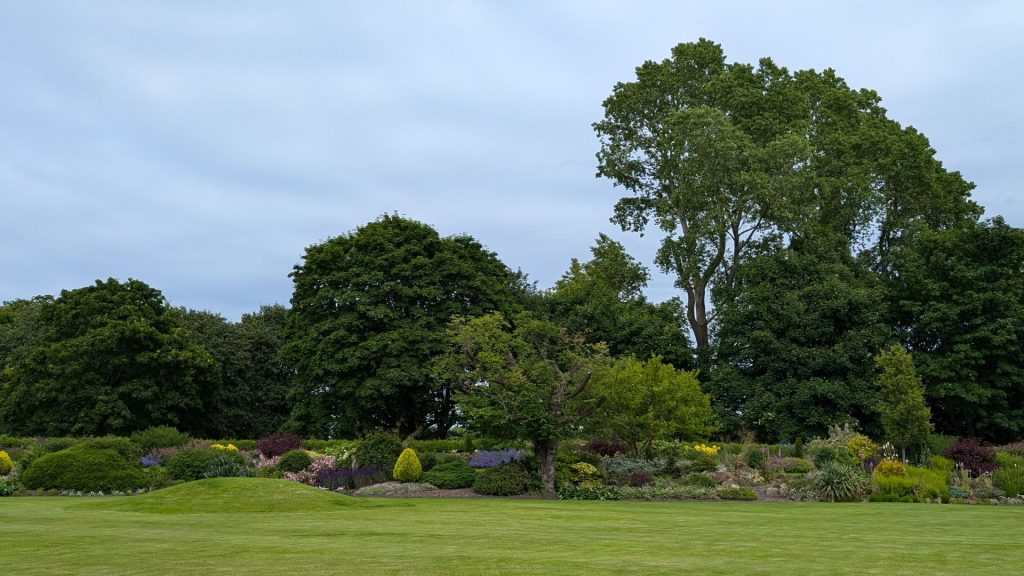
We passed by The King’s Gallery (we didn’t go inside) on the way to the pub.
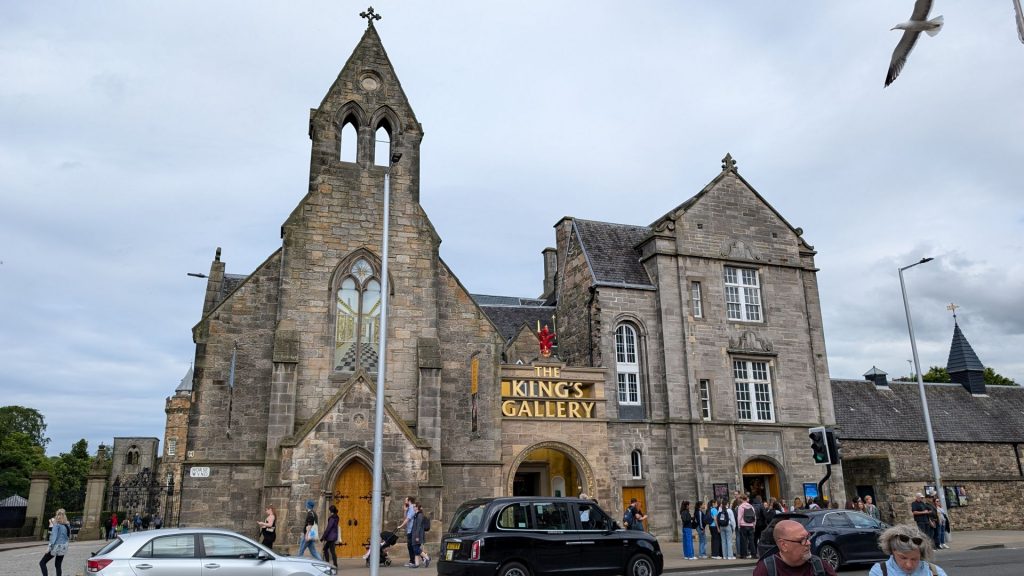
I read about the Tolbooth Tavern on someone’s travel blog. Built in 1591, the Tolbooth Tavern has seen many uses over the years – at one time it was the main public entrance to the Royal Burgh of Edinburgh, where tolls from incoming travelers were collected. It has also been used as a council chamber, police station and a prison. It was in 1820 that it became a tavern, remaining remarkably unchanged to this day.
It was busy and the food and beer were good.
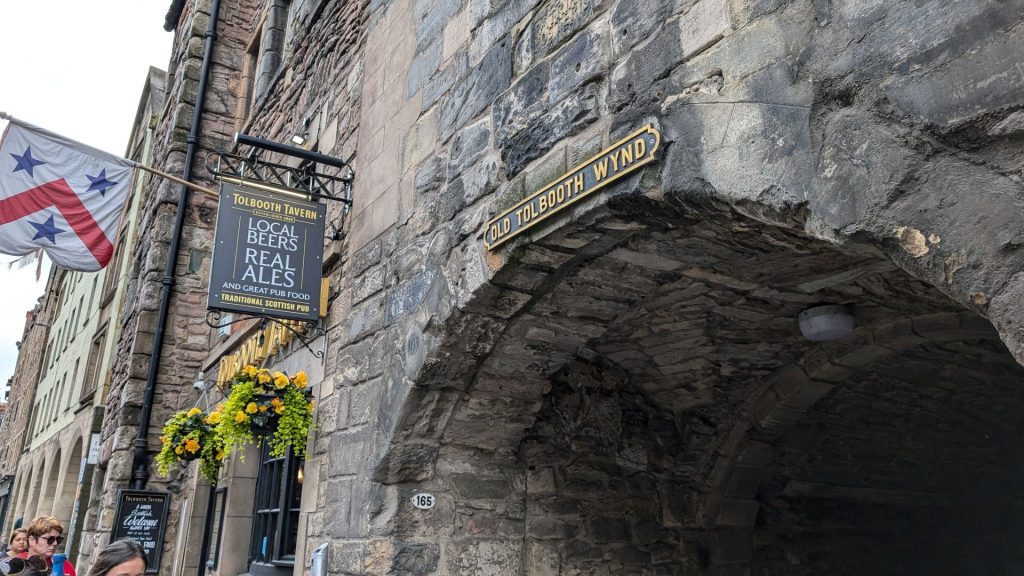
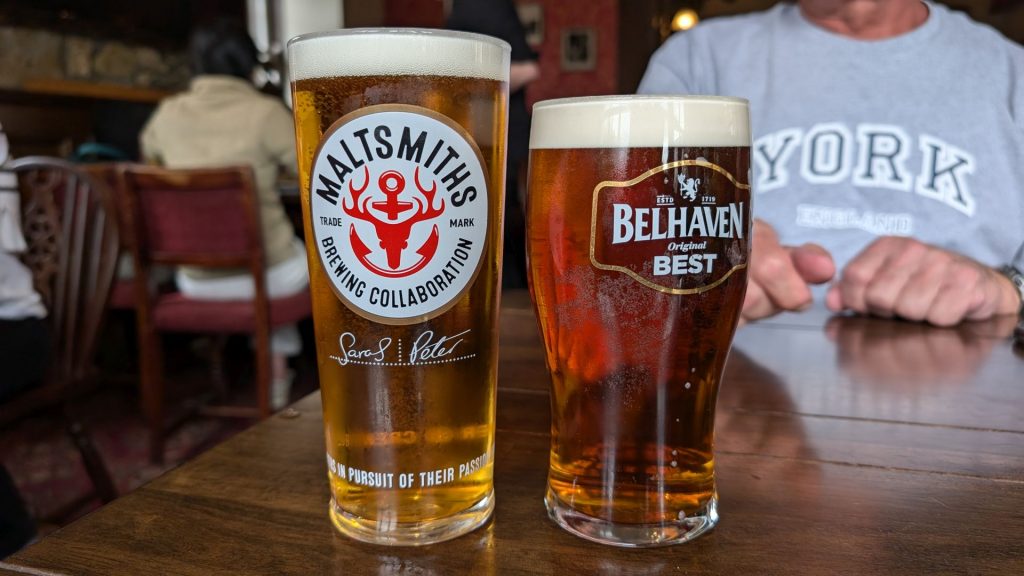
Michael ordered fish and chips about every other day in the UK and Ireland. 🙂 🙂
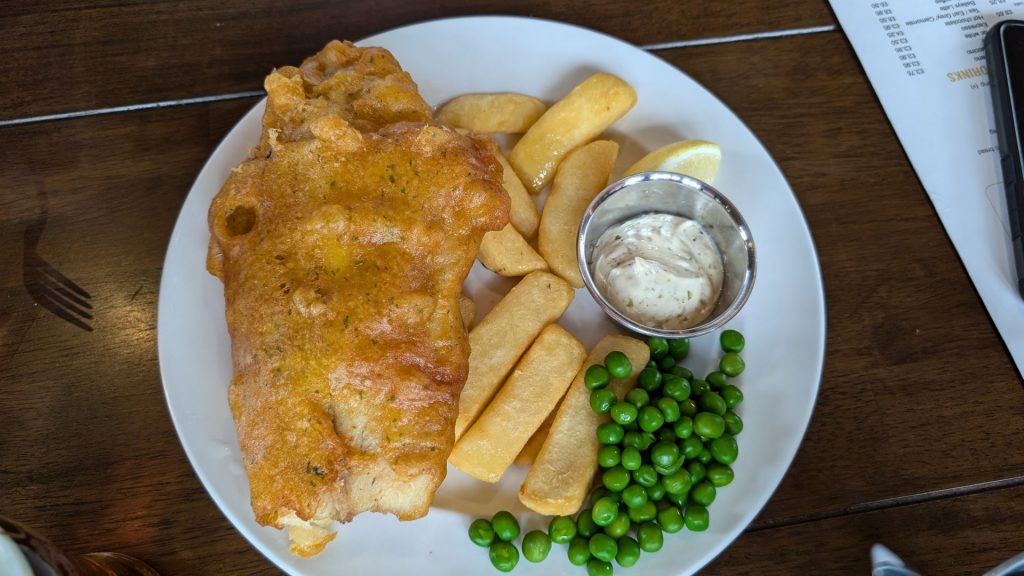
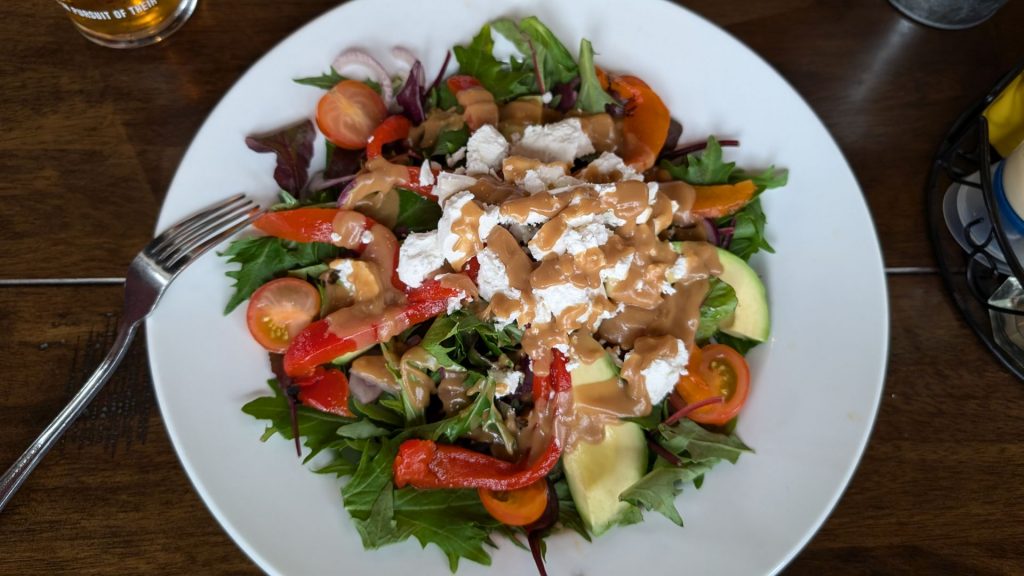
We’ll share our third and final day in Edinburgh in the next post.
